The conservation departments of ethnographic museums are indispensable for joint participatory and collaborative projects of their institutions with indigenous communities. Nevertheless, they often remain in the background when it comes to conceiving and managing such projects, or using them to forge long-term relationships with communities. The ‘From Preservation to Care’ Workshop at the Linden-Museum in Stuttgart explored the potential for closer, mutually beneficial and sustainable partnerships between indigenous communities and conservation departments in European museums. Through the presentation of concrete projects, the workshop also provided a space for discussion on the day-to-day challenges, questions, learnings and issues that such cooperation brings, as well as for exchanges on potential ways to adapt internal structures within museums to facilitate collaboration throughout the institution. More...
Read on for a more in depth look into the presentations and discussions…
In March 2023, the Linden-Museum hosted the workshop 'From Preservation to Care' as part of the project’s second work package. It focuses on issues related to museum conservation/preservation as one of the most important, innovative aspects of museum practice around which radical rethinking of the role of ethnographic, and world cultures museums as spaces of care can be organized.
Within this framework, this three-day exchange focused on how we could rethink collaborative conservation projects with indigenous communities and brought together conservators, curators and other museum professionals.
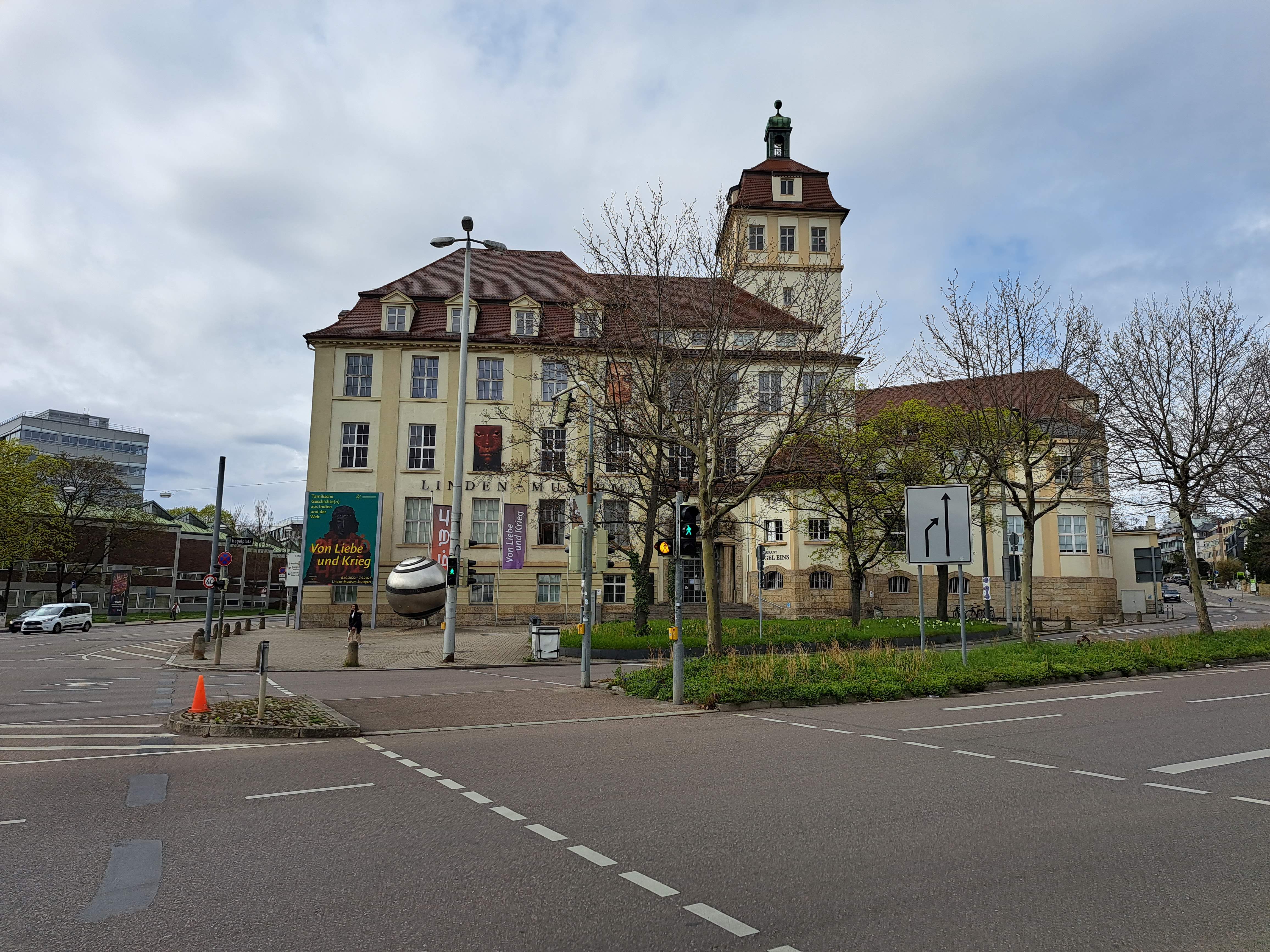
The workshop kicked off with welcoming speeches by Ulrich Menter (Linden-Museum Taking Care lead) and the head of Collections and Research Laura Osorio Sunnucks.
In the first panel: Museum and Indigenous Resilience: Enabling Solidarities between Local audiences and Indigenous Communities we heard from Maike Powroznik curator of the America’s collections at the Ethnographic Museum of the University of Zurich. Her talk entitled On the reconnection of a collection to the originator's society, focused on a participatory research project around the Bory Malkin collection at the museum. It aimed at reconnecting the collection with its originator community, the Wounaan in Columbia. The focus was on five core questions for the collection on context, provenance, contemporaneity, expertise and reconnection that are fundamental to understanding material culture and practical knowledge and enable a dialogue. Maike Powroznik shared the experiences and learnings made throughout. She left us with the question whether ethnographic museums could become places to open up possibilities instead of closing the door and being places of impossibility. As such places are archives of cultural memory, the speaker encouraged us to think of our institutions as forums for dialogues on visions for the future.
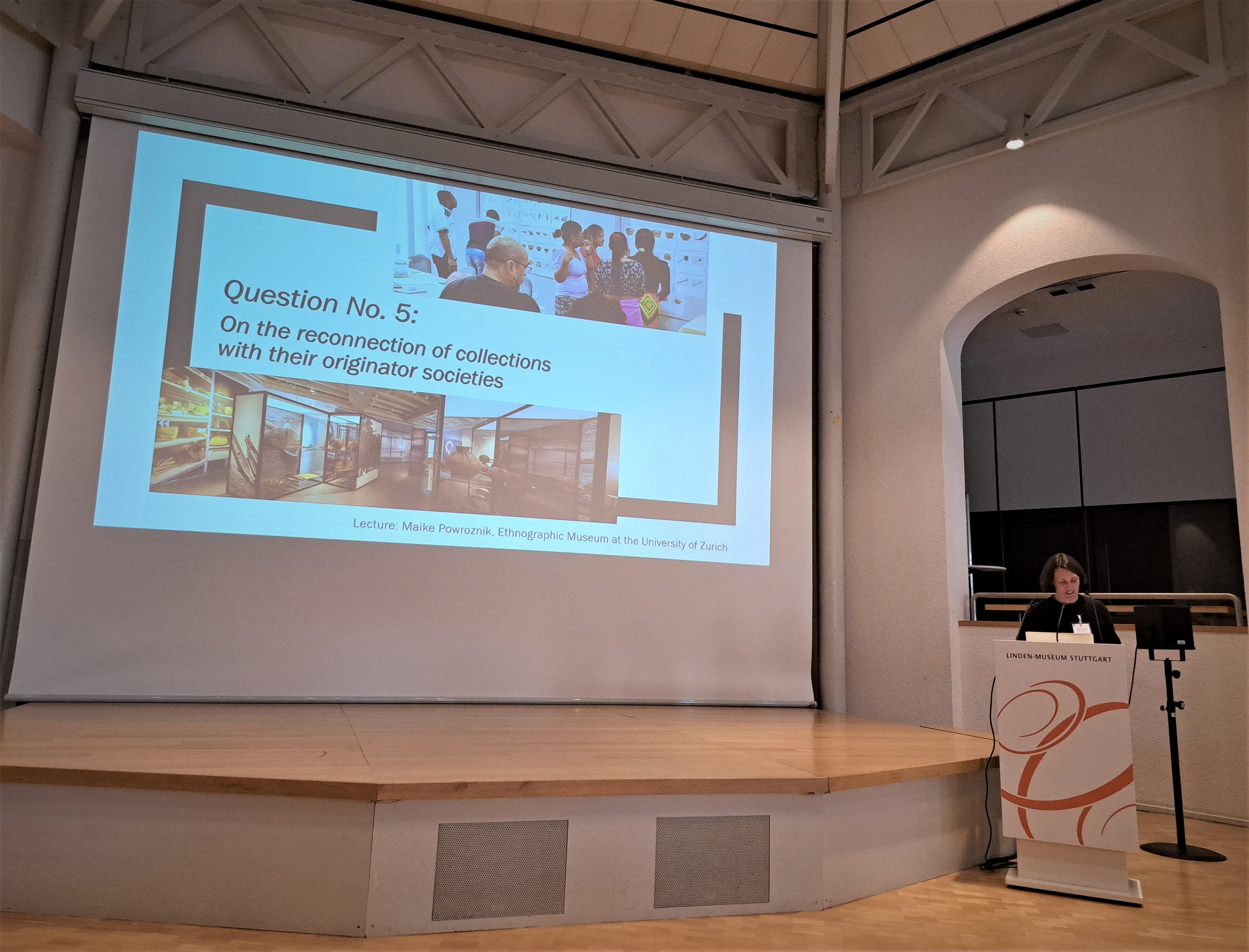
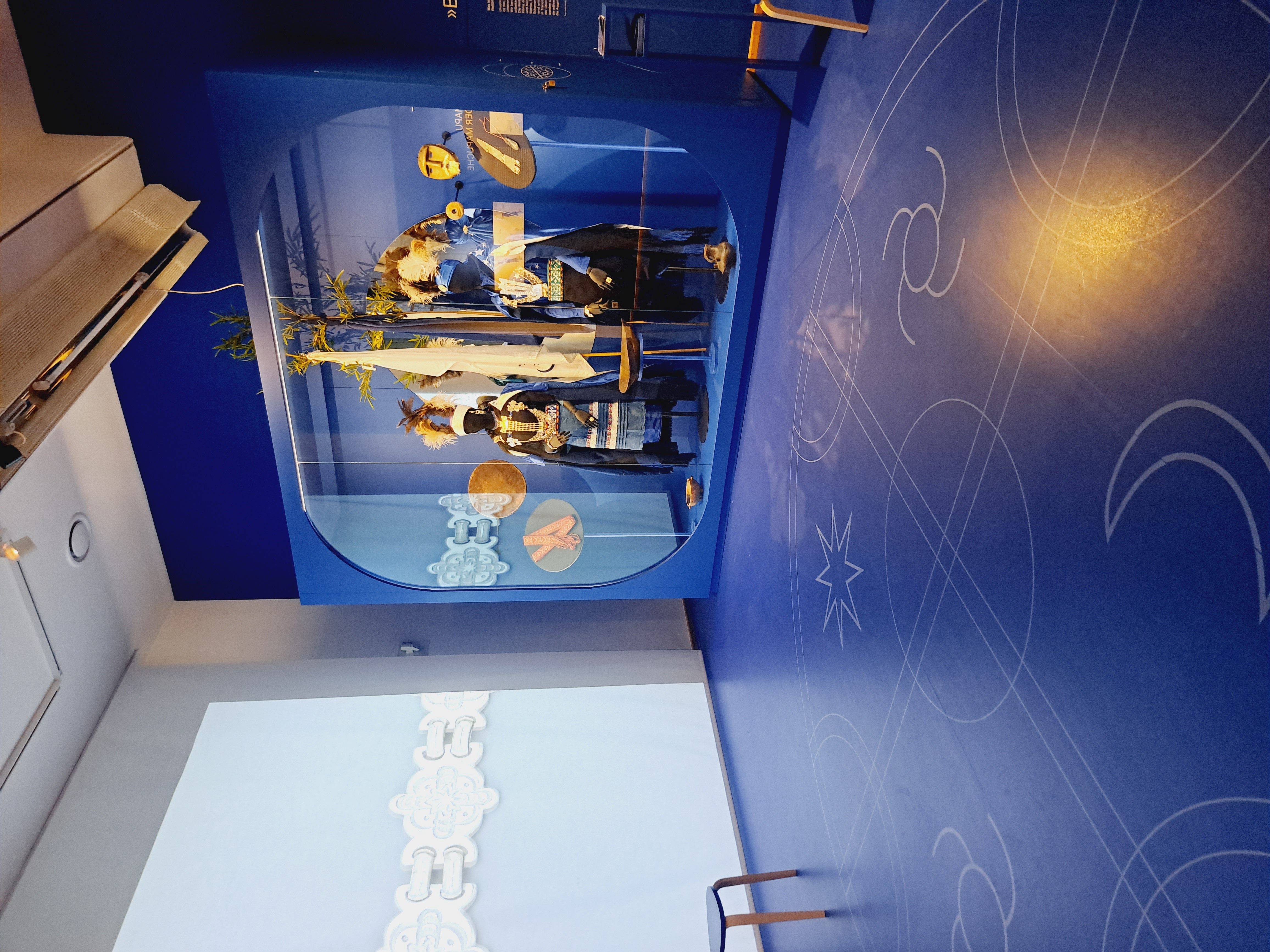
The following talk in the panel "El buen vivir Mapuche" - What is a "good life" in Mapuche culture and how is it reflected in the material culture” was by the curator of the Americas collections at our host museum, Doris Kurella. It explored the collaborative project with the Mapuche in Chile that started with exchanges during the RIME project in 2011 and culminated in the LindenLab 7. Through this, a new collection was created specifically for the museum, which is currently on display. It includes, for example, traditional Mapuche silver jewelry and dresses.
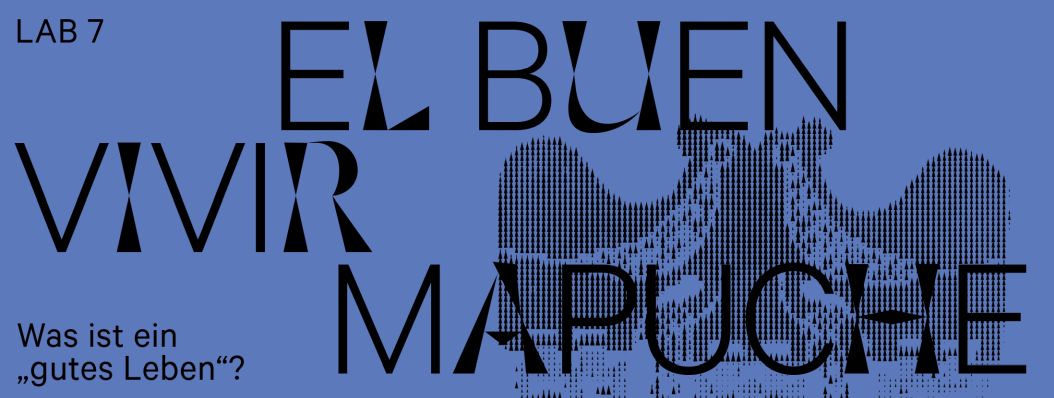
The first day ended with a discussion with the two panelists that went deeper into themes such as trust building between museums and indigenous communities in collaborative projects and the challenges that we face in creating a long-lasting relationships. The group pondered whether such a connection is always rooted in inter-personal relationships and what the role of the institution as a whole in this context should be. This expanded into a conversation on responsibility of the museum, when the collaborations have a cultural and political impact on their communities.
When exploring the institutional challenges that such projects present, we agreed there are often conflicting interests, for example granting as much access for communities as possible to potentially contaminated collections.
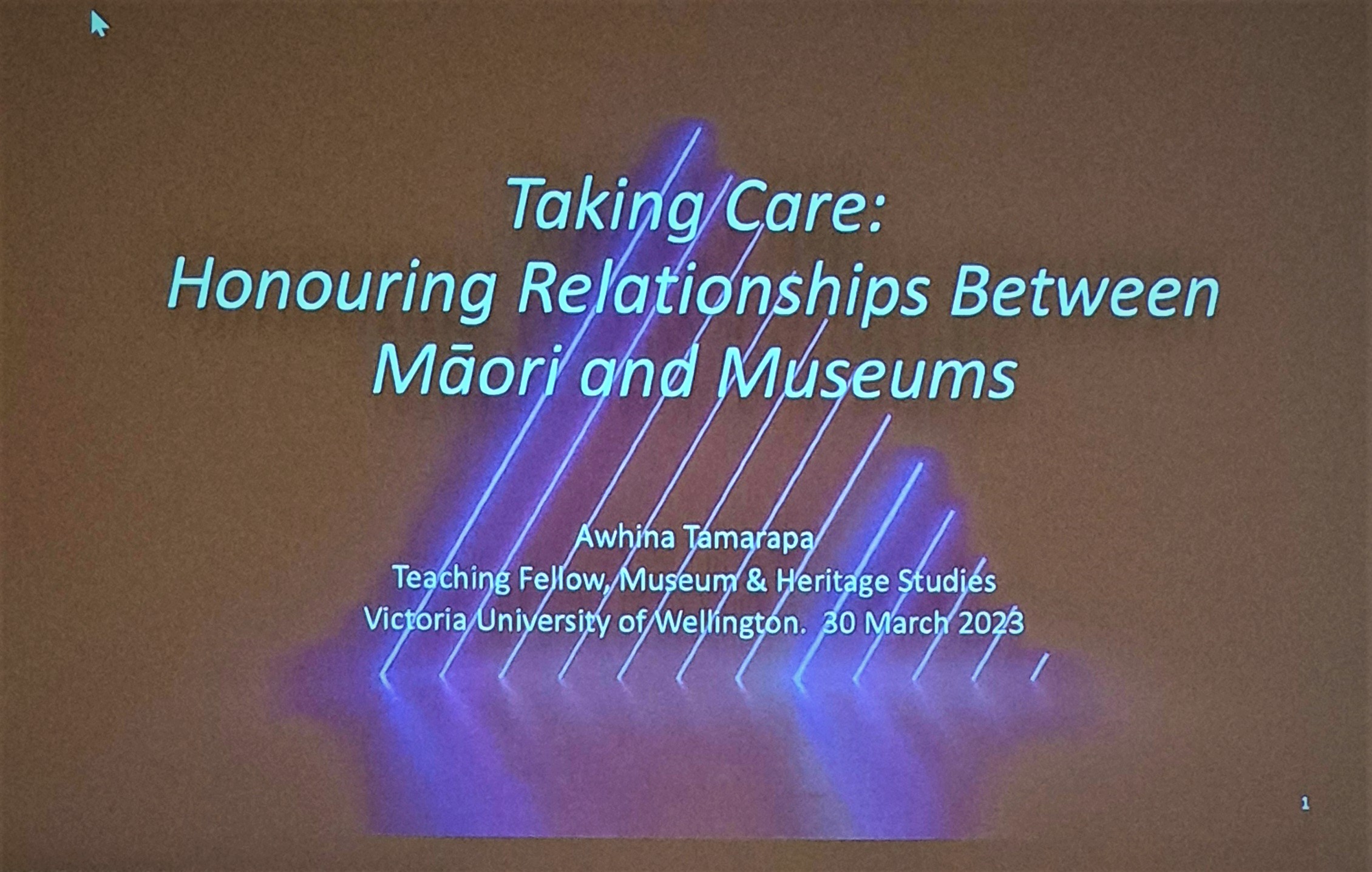
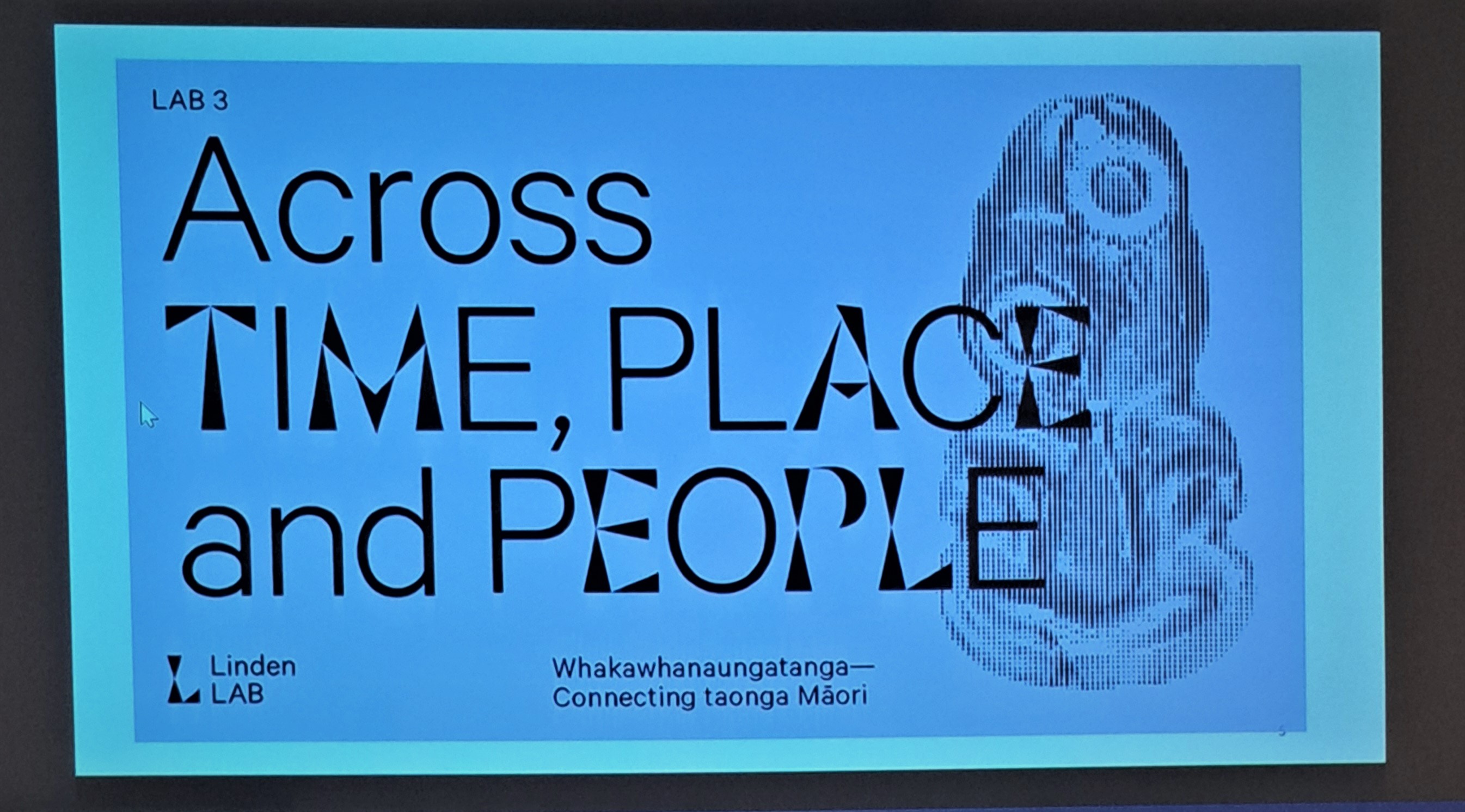
Day two started with a zoom presentation from New Zealand by Awhina Tamarapa, a museum curator and writer in the field of museum studies (Victoria University, Wellington, Aotearoa) who collaborated with the museum on the creation of the LindenLab 3: Whakawhanaungatanga – Connecting Taonga Māori Across Time, Place and People.
In her talk Taking care – honouring relationships between Māori and museums, she initially spoke about the concept of Taking Care from a Māori perspective and what this means in regards to the interaction with museums. This should include an openness to alternative approaches and a focus on building strong relationships with trust, honour and respect for one another at its core.
In the exchange following the presentation, the group talked about the relevance of keeping warm, in other words, keeping 'taonga Māori’(Māori treasures) relevant in the cross-cultural collaborative process. This entails that museums invite communities to come, visit and reconnect with their treasures, which is vital to understand their own cultural heritage.
Awhina Tamarapa told us that 'Museums must understand and act according to their obligation as custodians as a matter of taking care.'
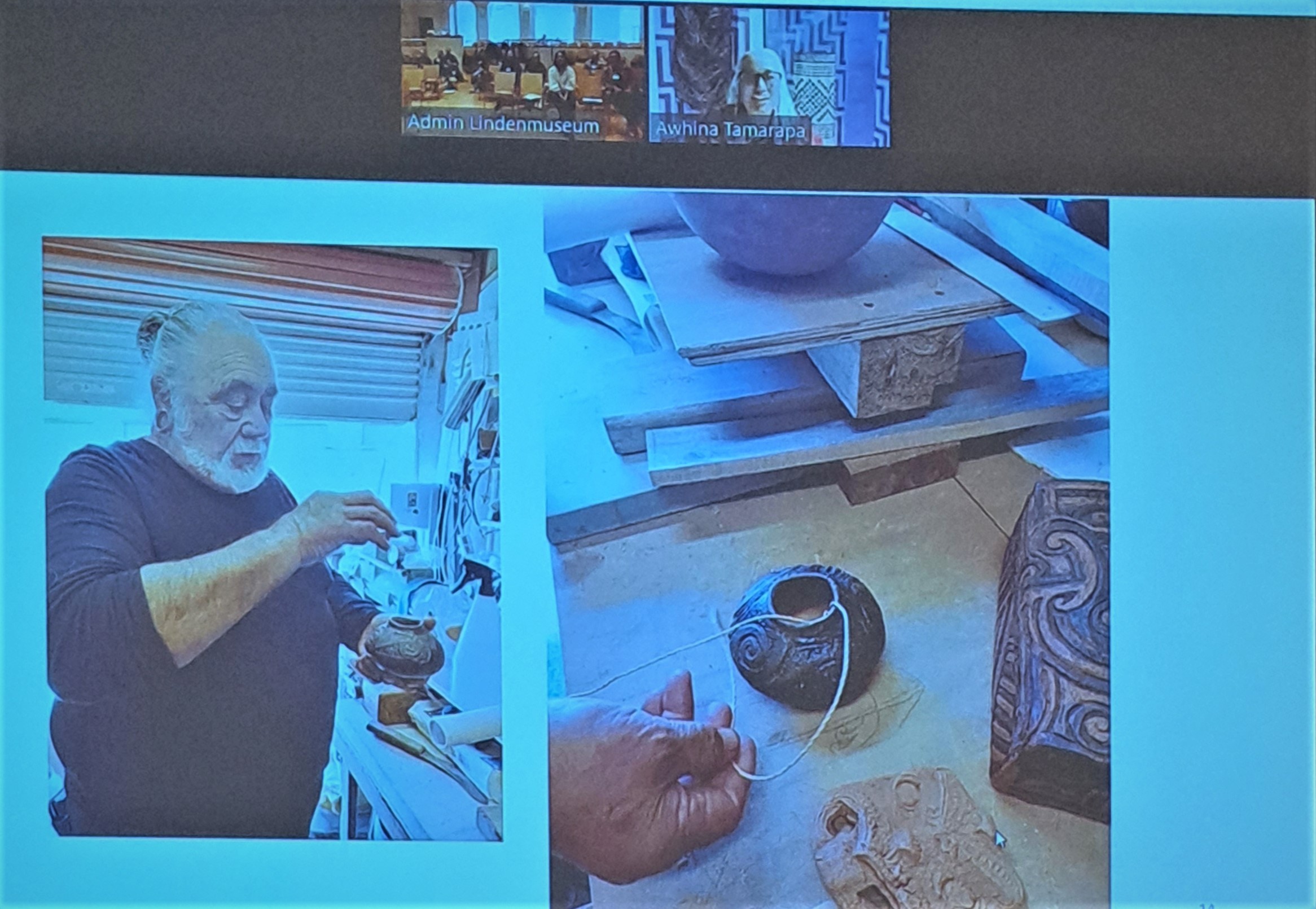
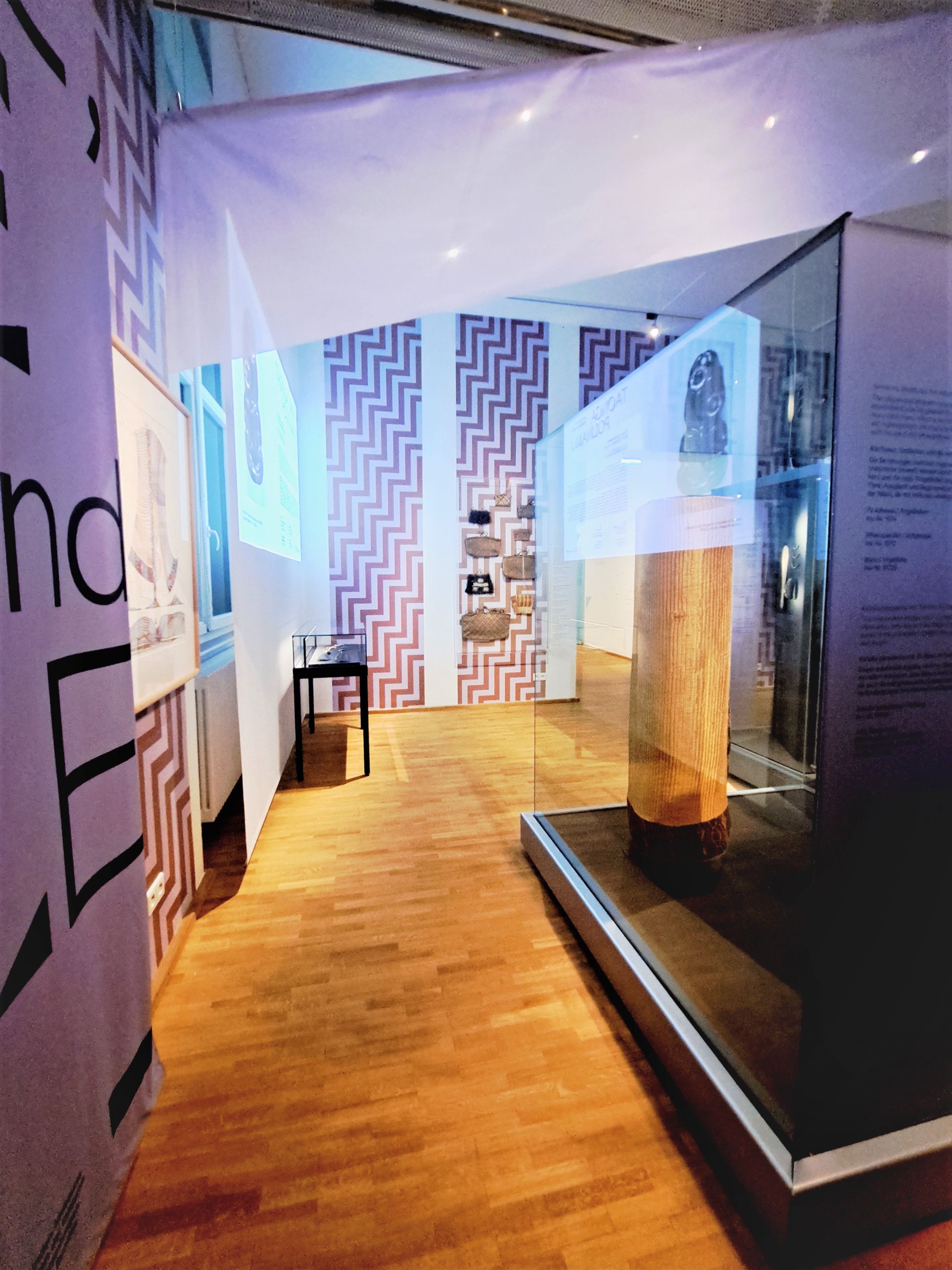
This talk invited more conversations on the internal challenges of creating and upholding collaborative relationships between communities and museums, especially in regards to resources and communicating with audiences. Furthermore, we explored how communicating these kinds of projects with and to audiences is a way to engage with them outside of exhibition related activities. The conversation concluded with an overview of learnings from the creation process of this particular LindenLab.
The second panel Practicing Planetary Care: Stories of Sustainability from the Museum, started with the talk Climate action and sustainability in museums – Acting ecologically and recognizing potential by Sina Herrmann (project lead on Climate Action and Sustainability at the German Museums Association).
She shared concrete measures, actions and adaptations for museums in the areas of mobility, energy, exhibition design and education. This should include taking into account the companies and materials used, areas such as collection care, communication with audiences and the themes discussed in all museum activities. The next steps within the project are creating a certificate for sustainability and climate care for German Museums.
Sina Herrmann concluded her talk with three key suggestions:
1. Sustainability is a process that
takes time
2. Make Sustainability part of a
museum's culture as a whole
3. Build alliances with others
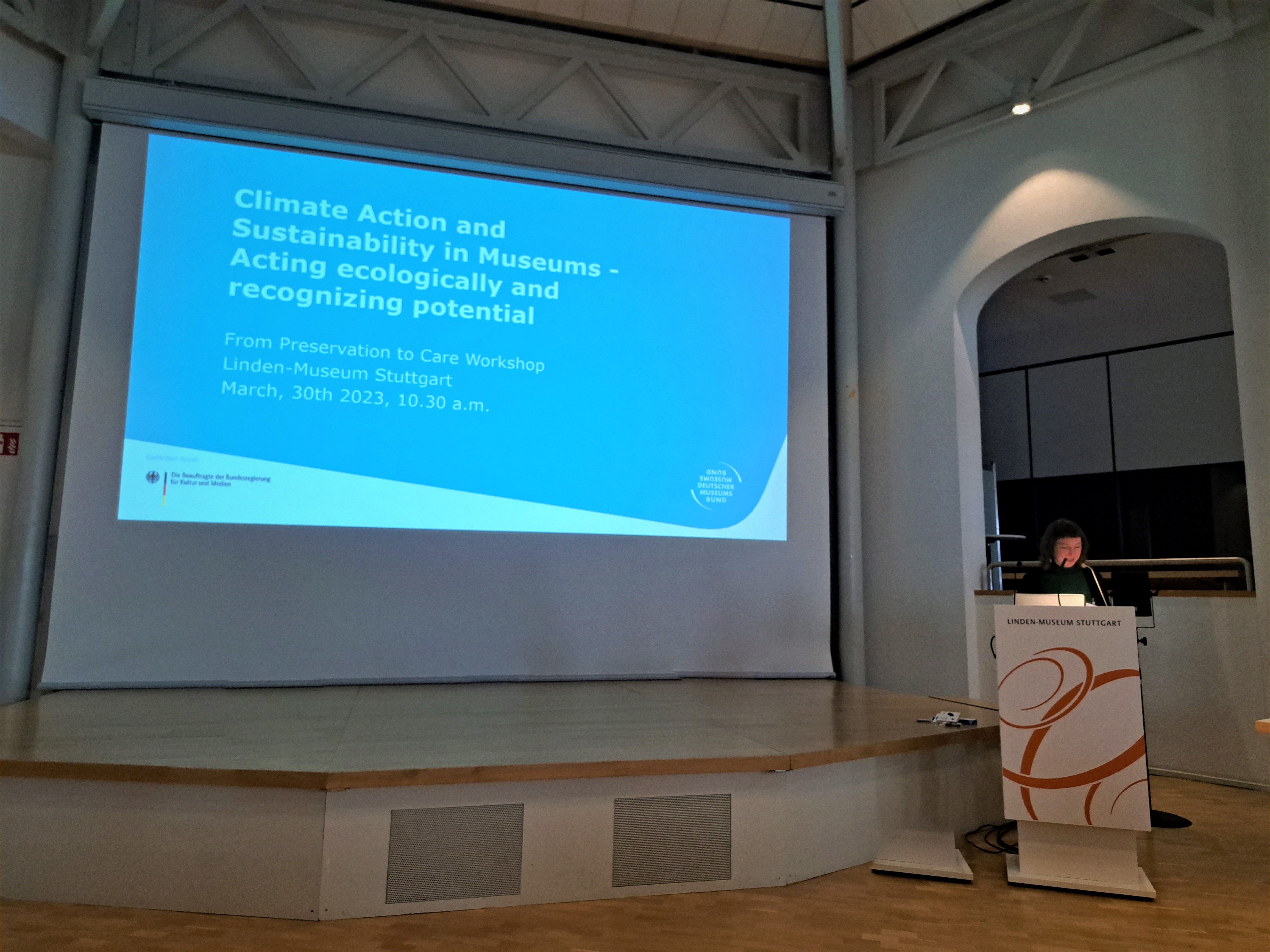
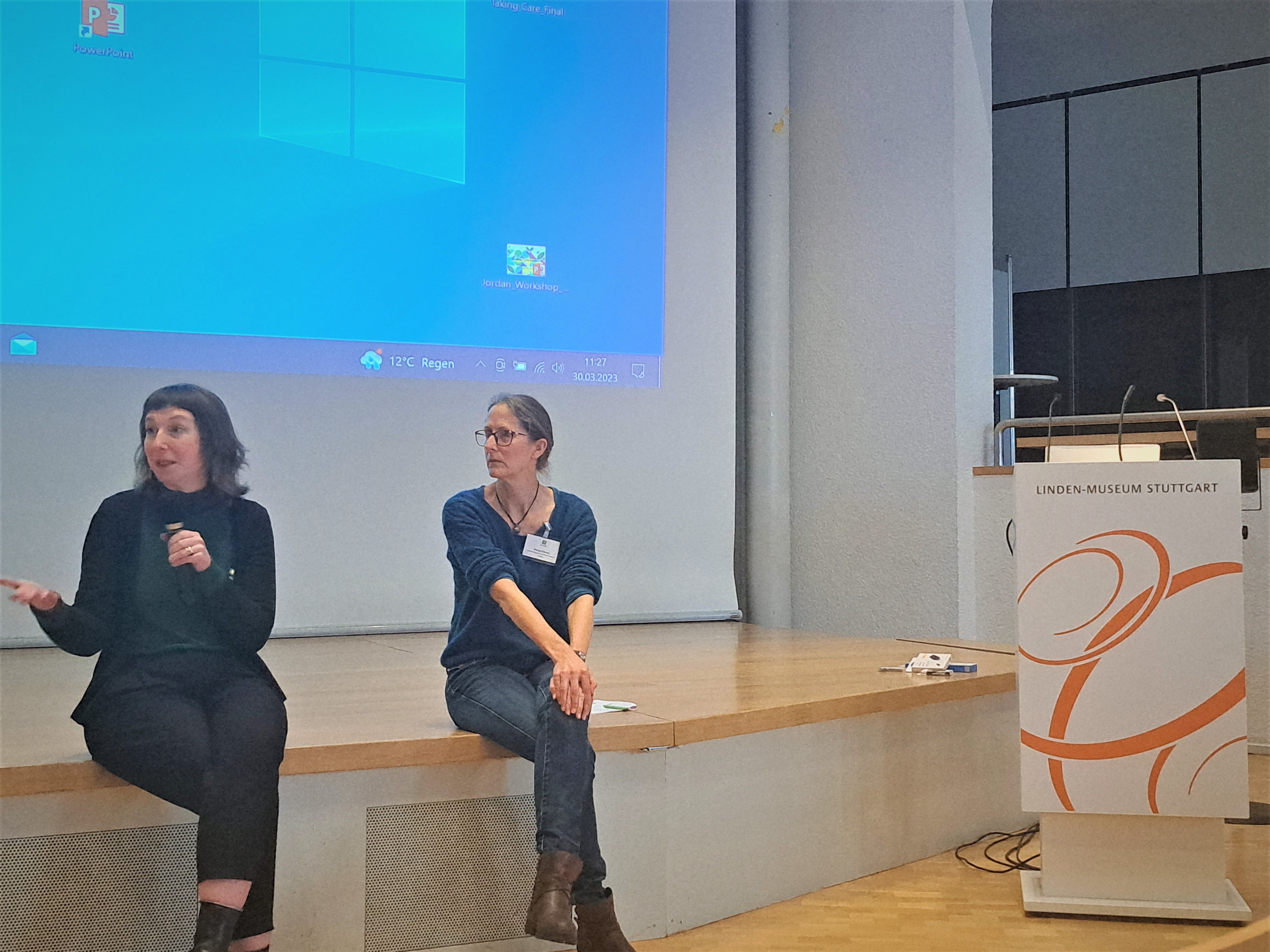
The next talk in the panel was by Margit
Reuss (conservator at the National Museum of World Cultures, Leiden) who told
us about the Plastic
Crush - Approaches to a more sustainable exhibition preparation. She elaborated on how sustainable approaches were incorporated
into the design, building and educational programmes of the exhibit.
The conservator also spoke of the importance of transparency in designing
and communicating with audiences. These were all points considered in the
creation of the Plastic Crush at the Tropenmuseum, which is about the changing relationship with plastic. We also expanded on
the learnings from the project, which should be taken into account in future
sustainable exhibition creation projects.
In the conversation about the second panel on climate action and
sustainability in museums, we talked about sustainable exhibition
planning and creation as a collaborative effort between museums, as well
as carbon calculating in museums.
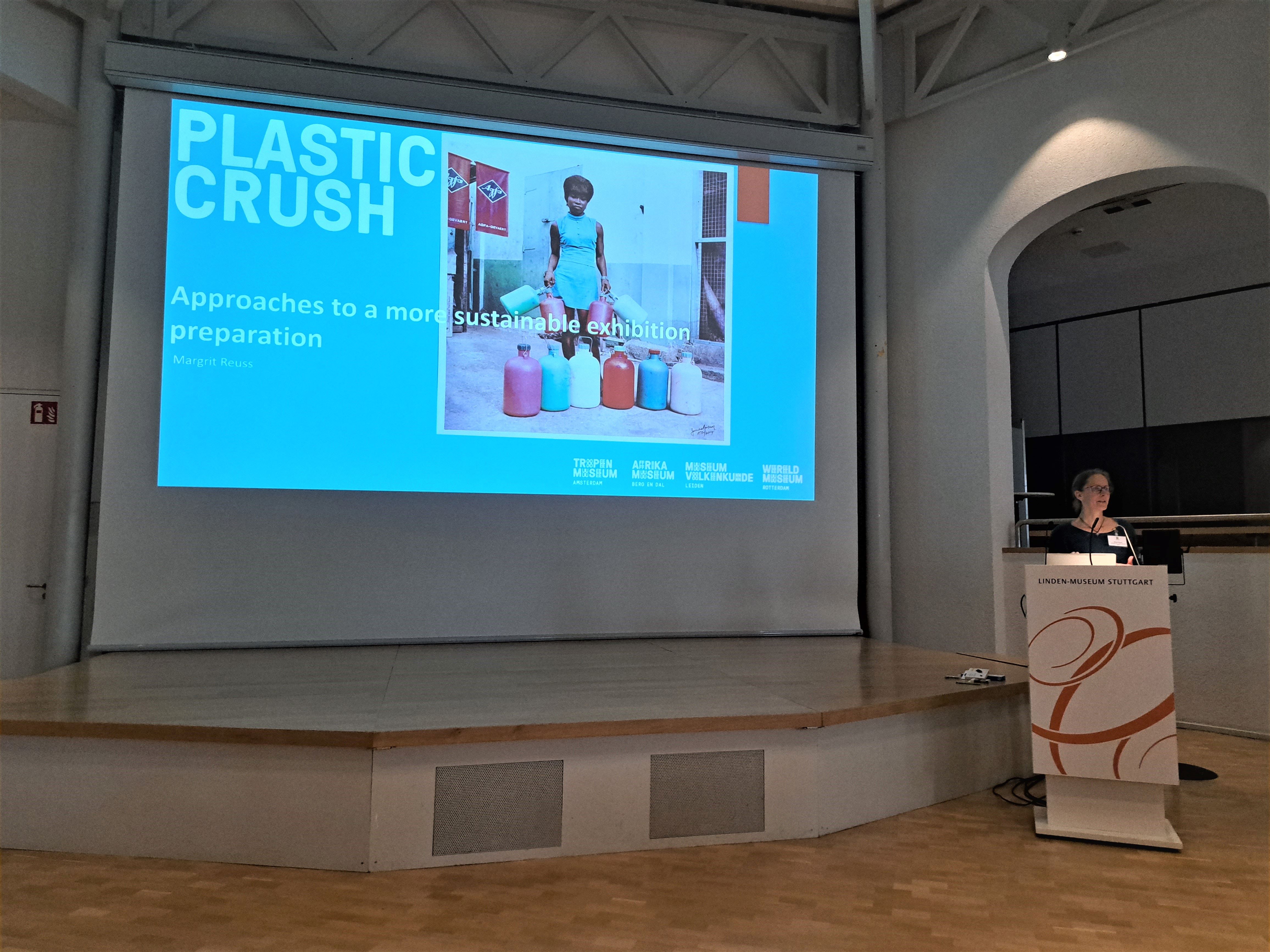
Day two of the workshop continued with the third panel on Conservation Standards and Participative Projects, which itself started with a presentation on challenging conservation materials in What to store and how by Ana Motnikar, who is a conservator at the Slovene Ethnographic Museum in Ljubljana. Among many others, the museum’s collection includes several food items in the Slovene ethnographic collections, such as small breads, Trniči cheeses, Easter Eggs and other perishable items like Ljubenske potice (Palm Sunday bundles), which present many challenges in storage, conservation and exhibiting.
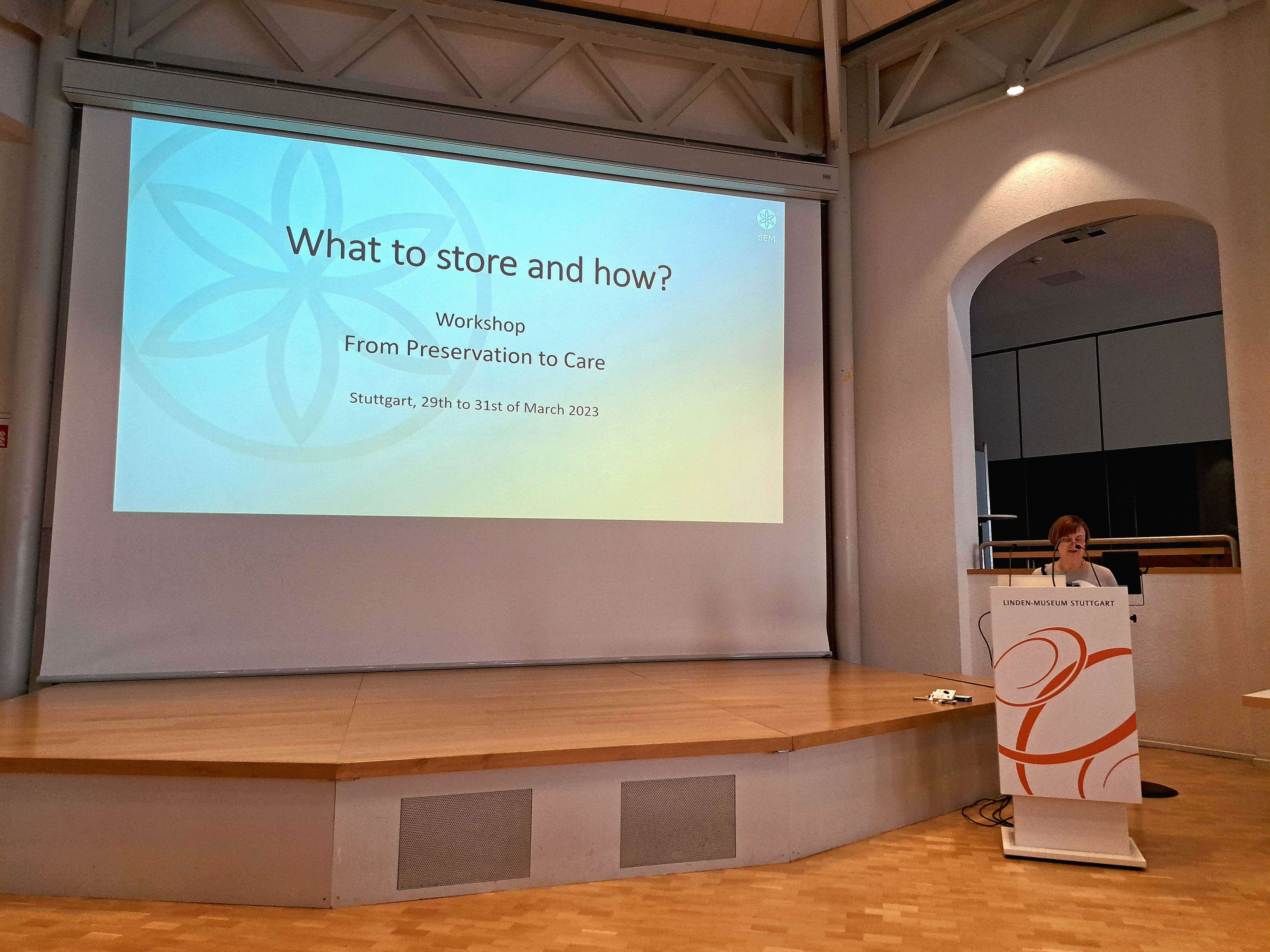
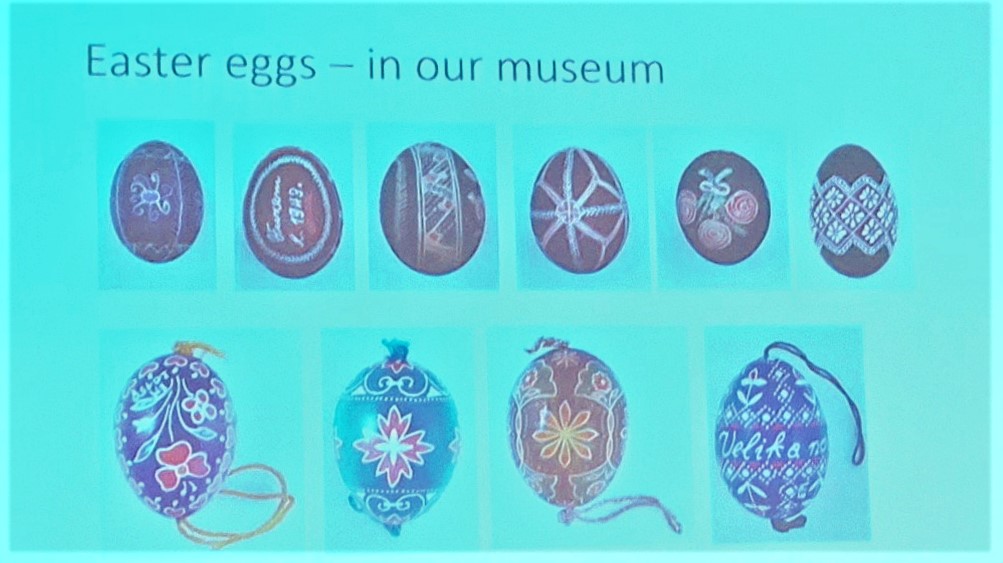
The next talk featured Mille Gabriel and Anne-Mette Marchen Andersen, curator and coordinator at National Museum of Denmark in Copenhagen, who discussed the challenges, in collaborative projects under the title: When acid-free tissue paper and medical gowns are not enough. Giving us several examples of previous exchanges with communities of origin, such as with Shgendoontan George and Glicéria Tupinambá, around the Different Pasts – Sustainable Futures project workshop, they explored their internal procedures and challenges. This includes, for example, limited resources and how this makes it difficult to provide sustainable access to objects in museum storages for originating communities.
In the conversation on the previous talk, the participants shared experiences about methodology in working with indigenous communities and collections in the partner museums and potential ideas to take back into our institutions.
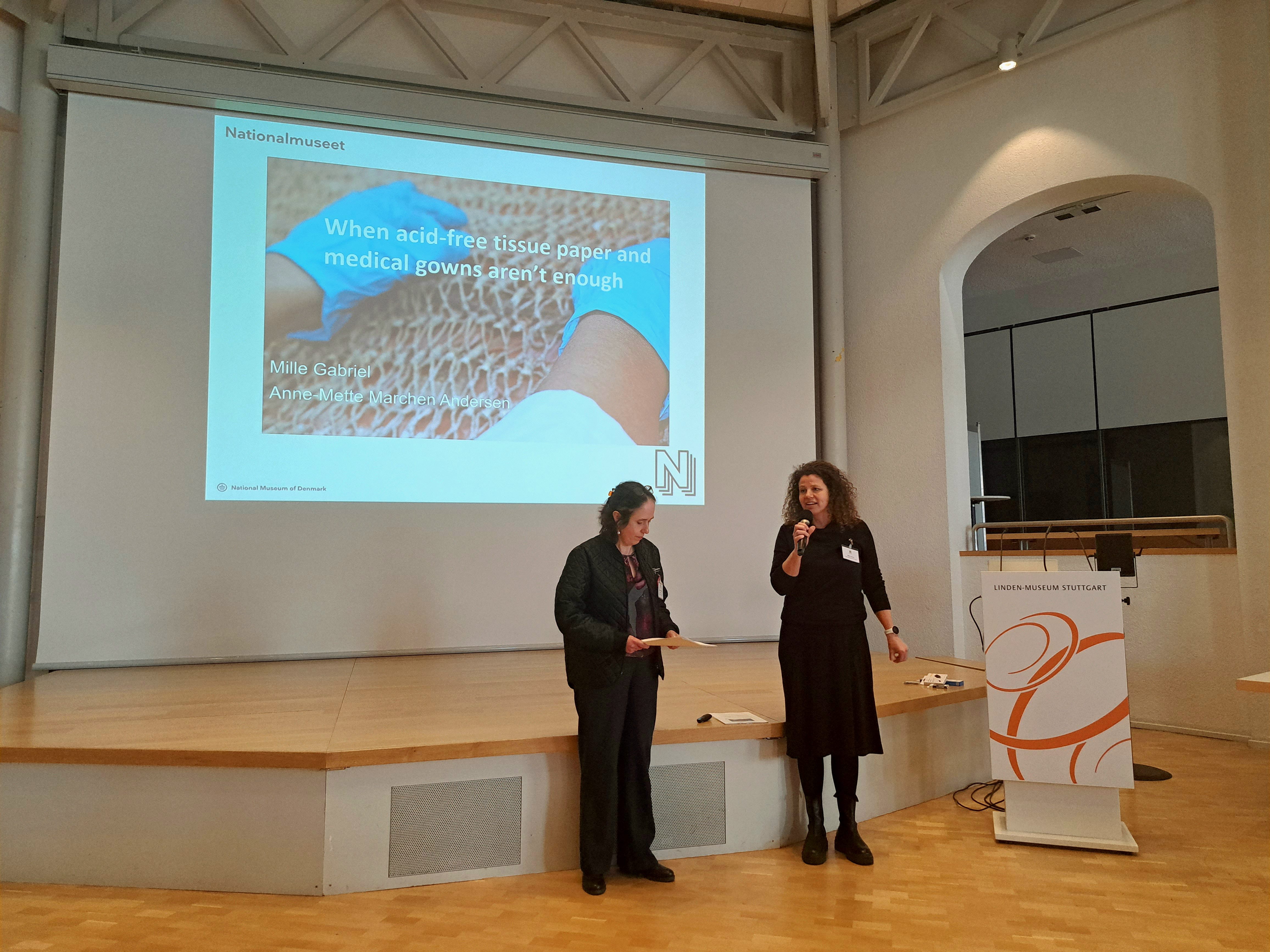
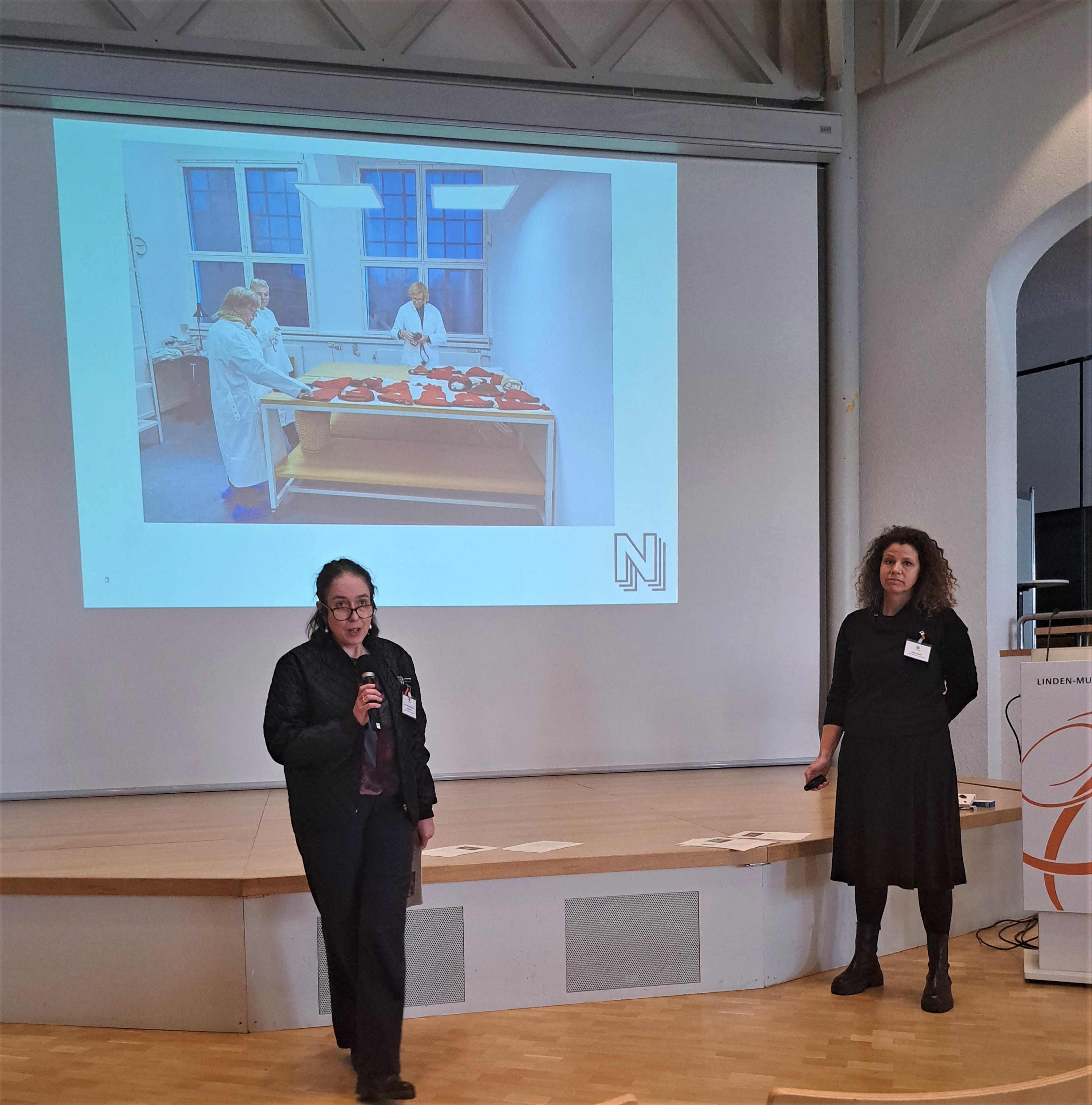
After a coffee break we heard from Siska Genbrugge, Coordinator of Conservation at the Royal Museum for Central Africa, Tervuren. She expanded on Blurred lines: preservation of museum objects travelling outside the museum box. This talk asked what museums need to reconsider in our guidelines, especially loan procedures, as we are now increasingly collaborating and forming partnerships outside of the European museum context. At the end of her presentation, she shared several case studies, such as the collaboration with the Expo Angola, the first indefinite loan to Democratic Republic of Congo (Kakuungu mask) and the open textile community workshop CAPtex.
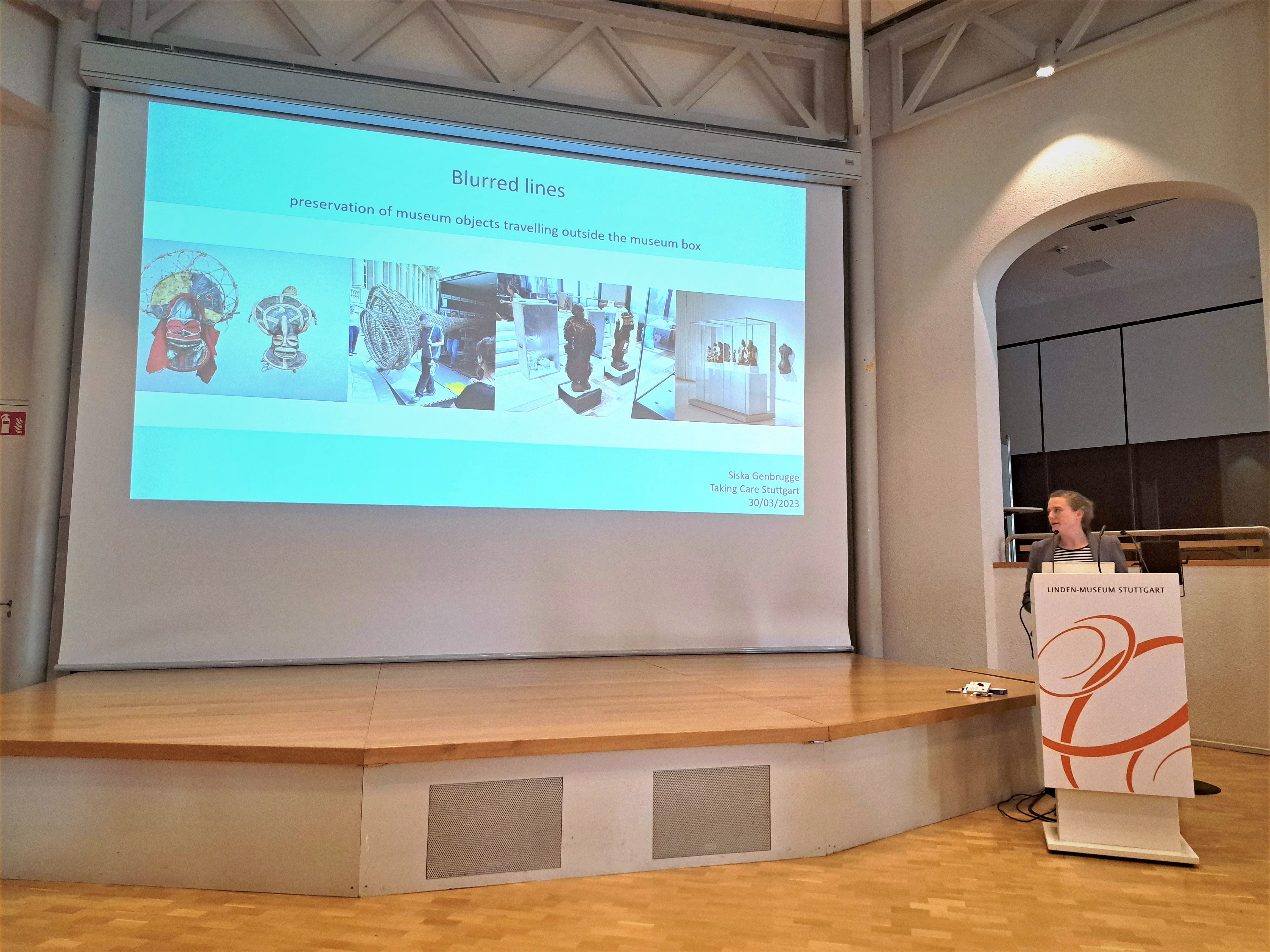
The penultimate presentation of the day Cooperation – Care – Communication: Three case examples at the Africa department was by Fiona Siegenthaler (Africa curator) and Nina Frankenhauser (conservator) from the Linden-Museum Stuttgart.
In a very open talk, the curator and conservator shared examples of collaborative projects within the Africa department. They highlighted the challenges of what care might mean in the context of collaborative projects, taking into account the interests of all stakeholders involved. They agreed that shared caring should be at the forefront of museum work. The experiences led them to ask, what is too much and not enough care in museums? It is apparent that open communication between all people involved is at the core of collaborative projects, as everyone should have the opportunity to be prepared and to express wishes beforehand and throughout.
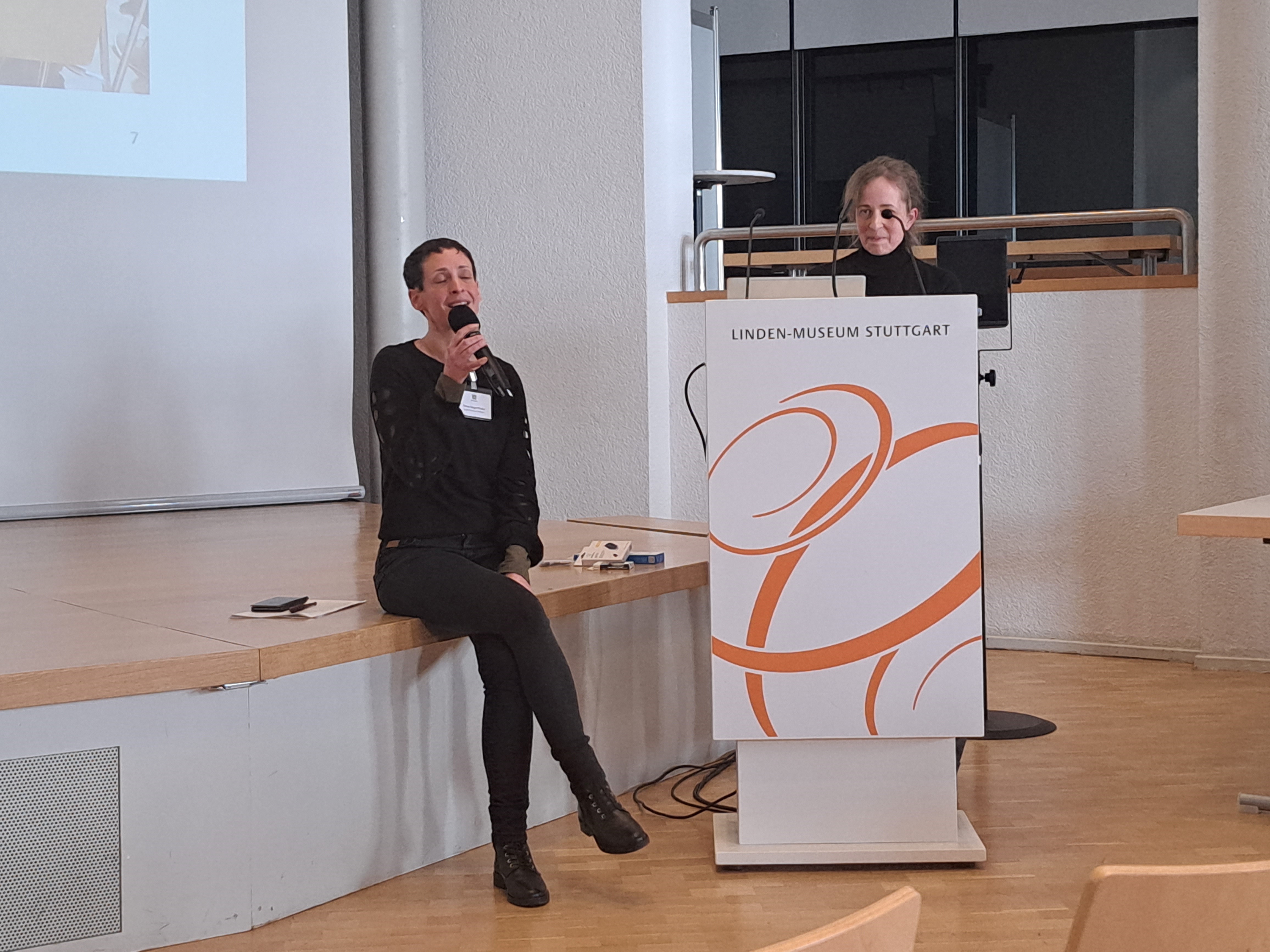
The discussion that followed explored whether, in regards to ownership of objects, we should introduce the notion of belonging to communities. It was also suggested to consider that the topics within an open discussion in collaborative projects should be agreed upon beforehand. We finalized the conversation with the thought that when discussing the responsibility of museums as custodians, perhaps we are too worried about structural integrity of objects. We should take into account that they have natural life cycles. This left us with the question of how we deal with damages to objects when thinking about decolonial museum practices.
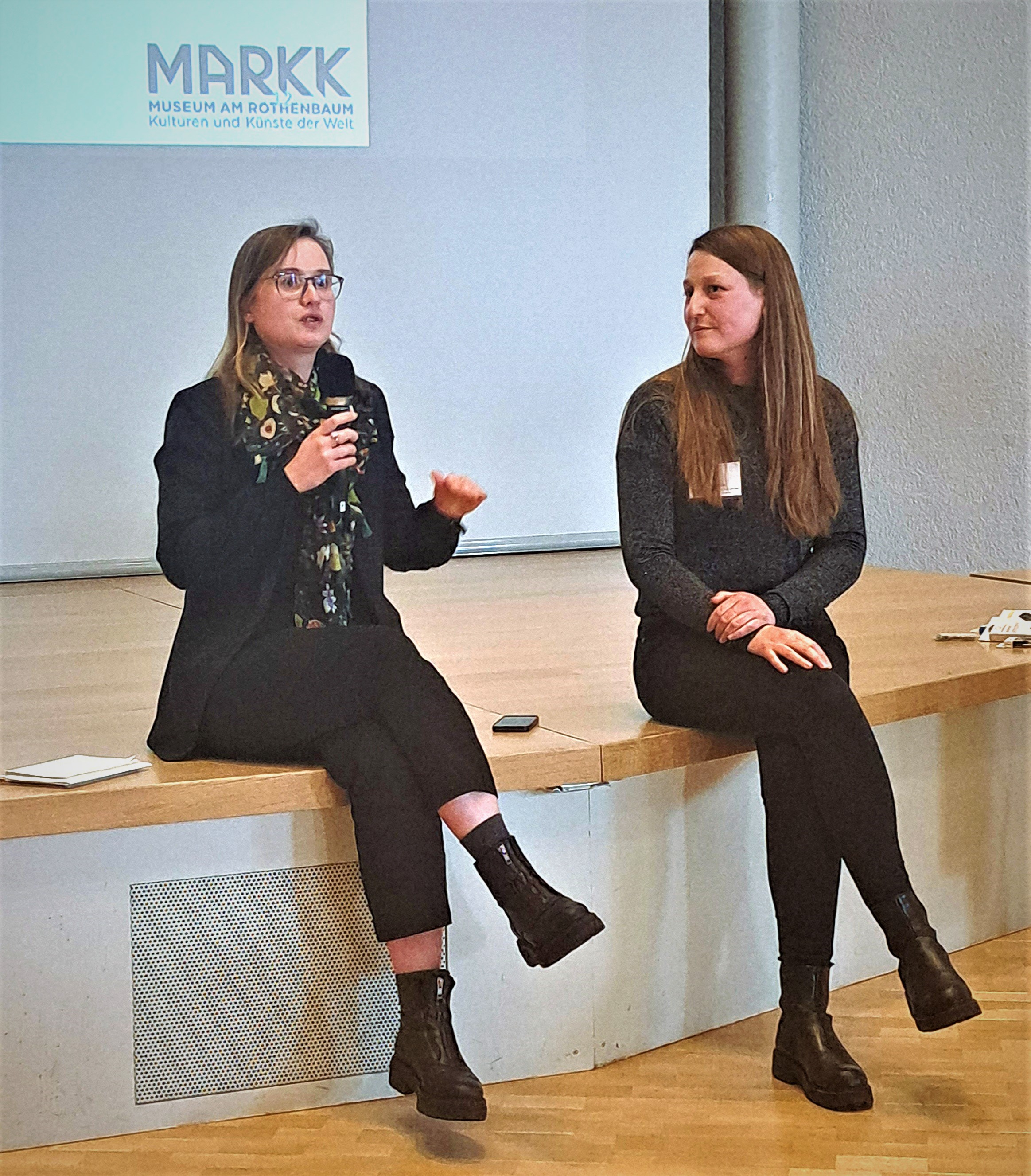
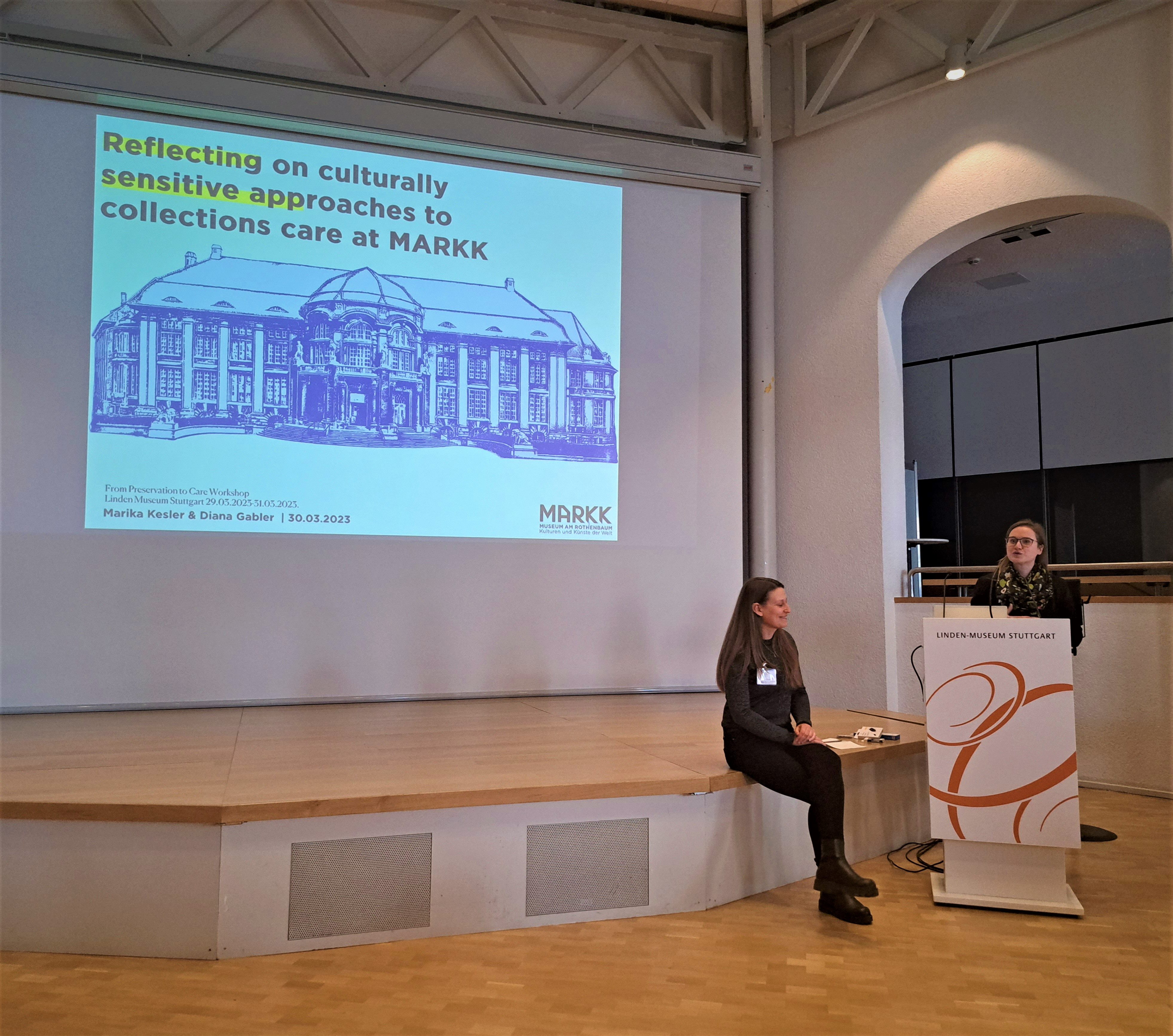
Diana Gabler and Marika Kessler, two conservators from the MARKK in Hamburg, held the final talk of the day entitled: Reflecting on culturally sensitive approaches to collections care at MARKK. They shared examples of previous and ongoing projects in their museums involving community collaboration and their insights, as well as their difficulties such as time restraints, missing information and incorporation of learnings from community experts. The conservators finalized their talk with potential solutions that could change the methodology of work in the department.
In the exchange on this final presentation of the day, we talked about the challenges of museum object databases and documenting treatments.
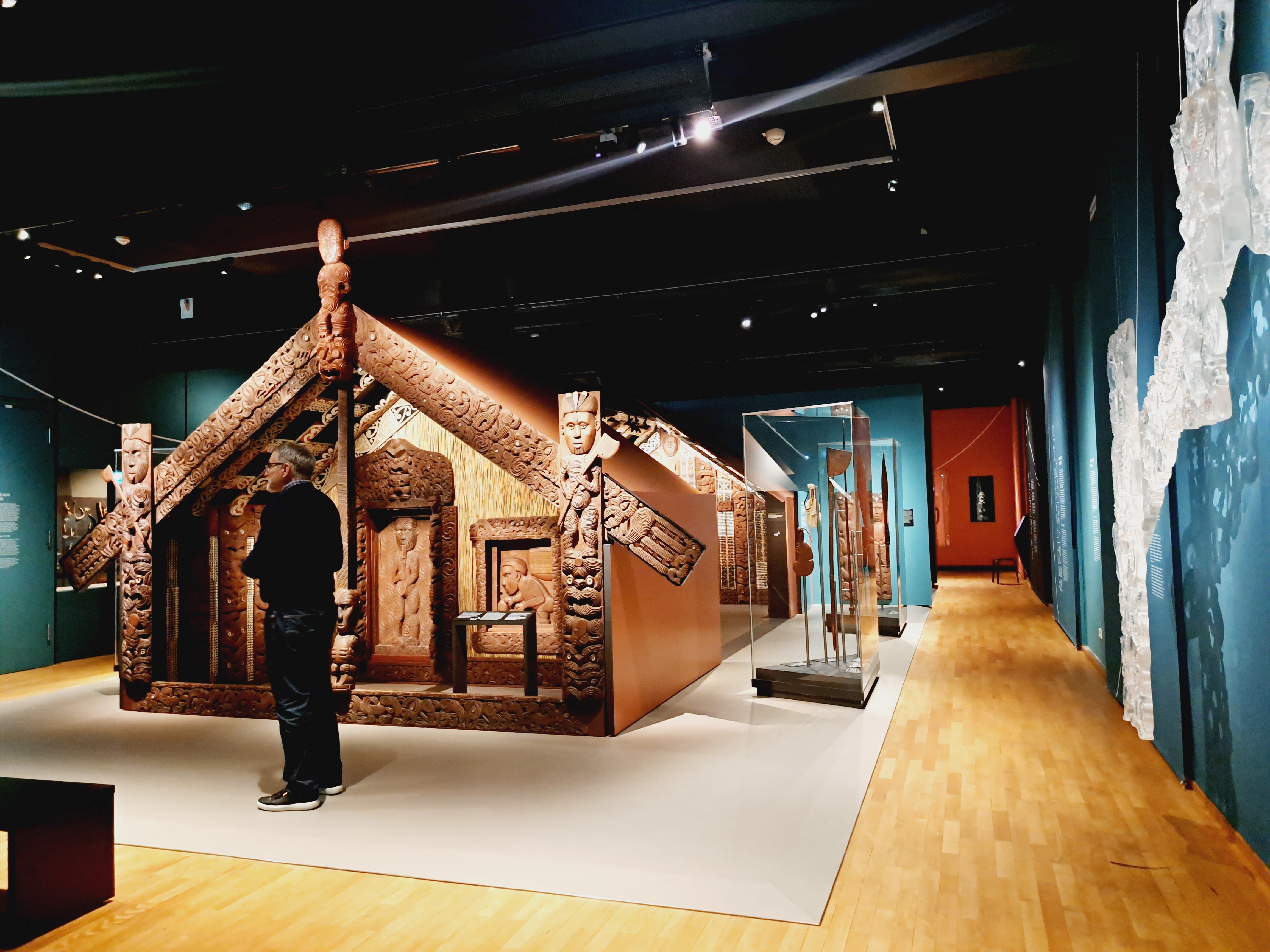
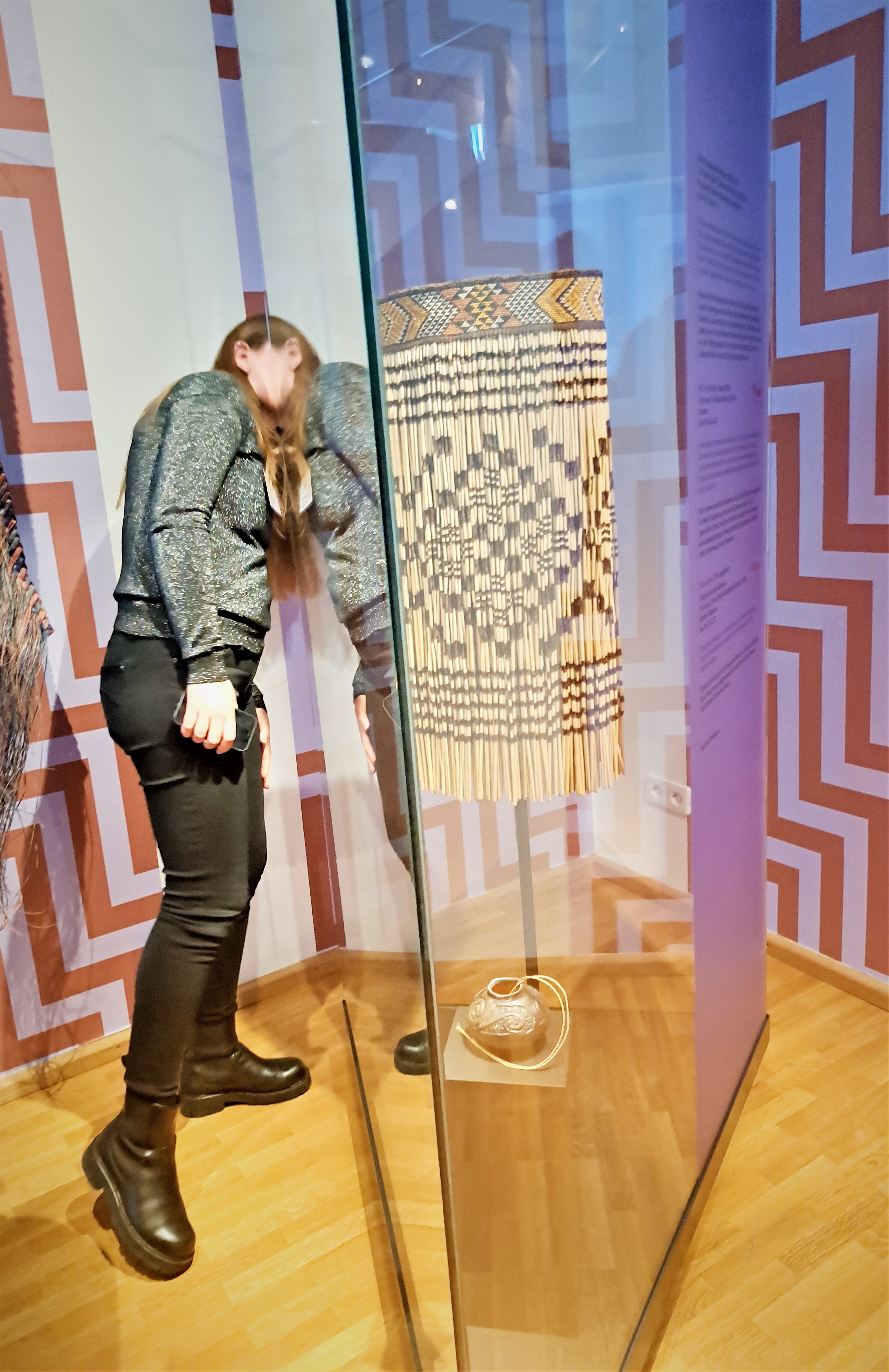
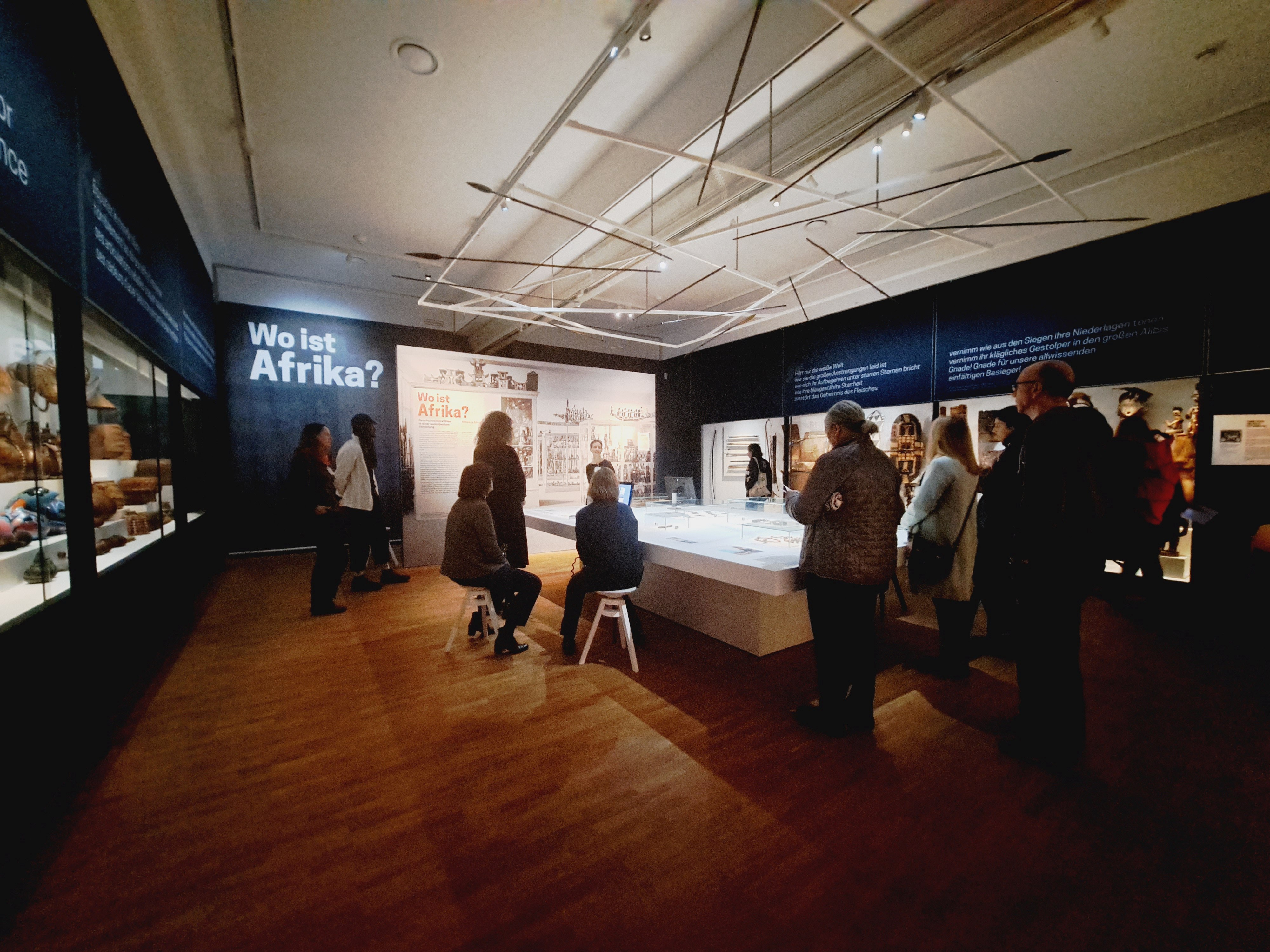
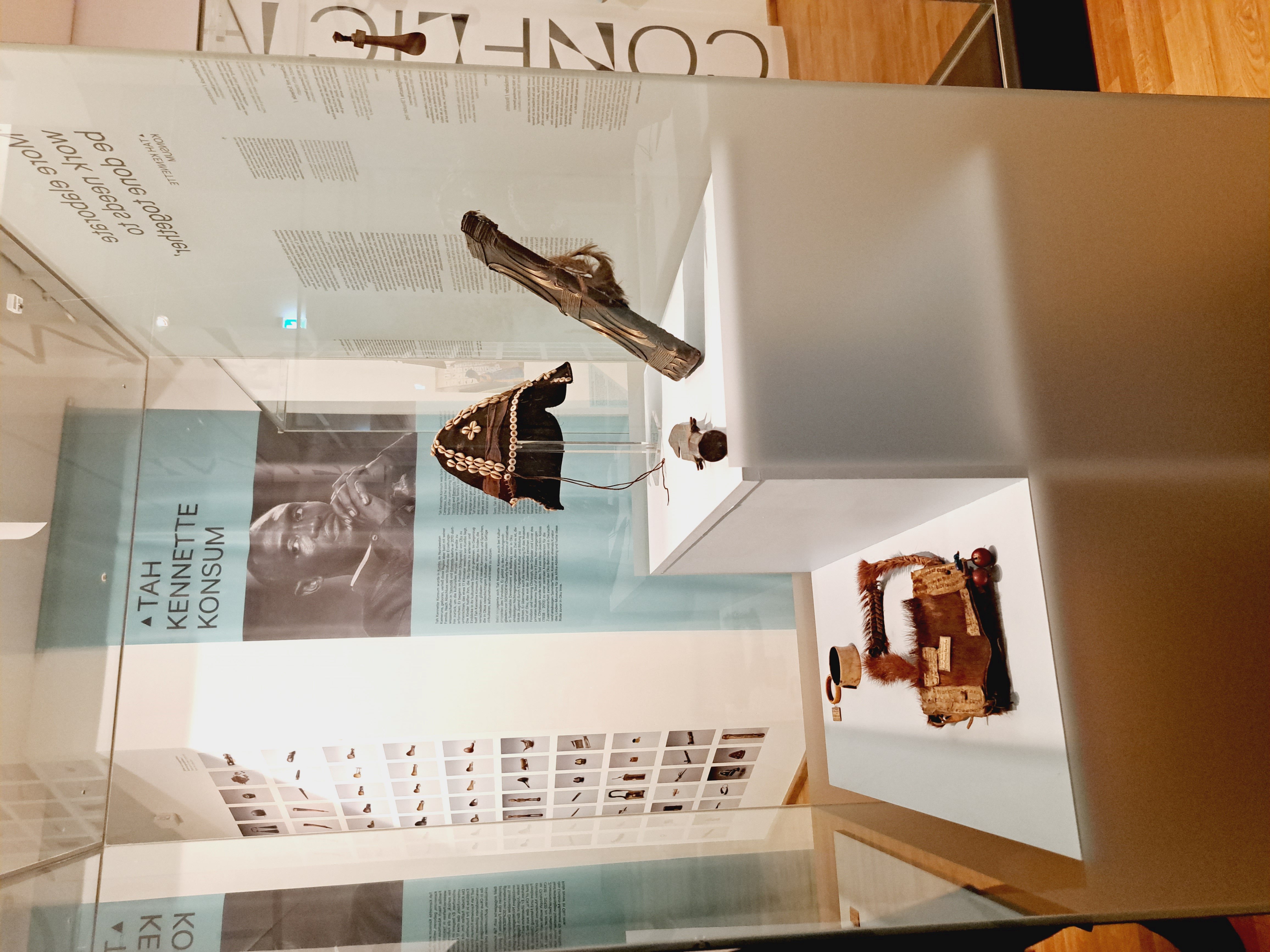
After these talks, we headed to the curators’ museum tours through the LindenLabs and collection of artefacts from the African continent “Wo ist Afrika?” (Where is Africa’), as well as the new Oceania permanent exhibition.
We concluded our day with a delicious meal in the beautiful ambience of the Ratskeller in Stuttgart.
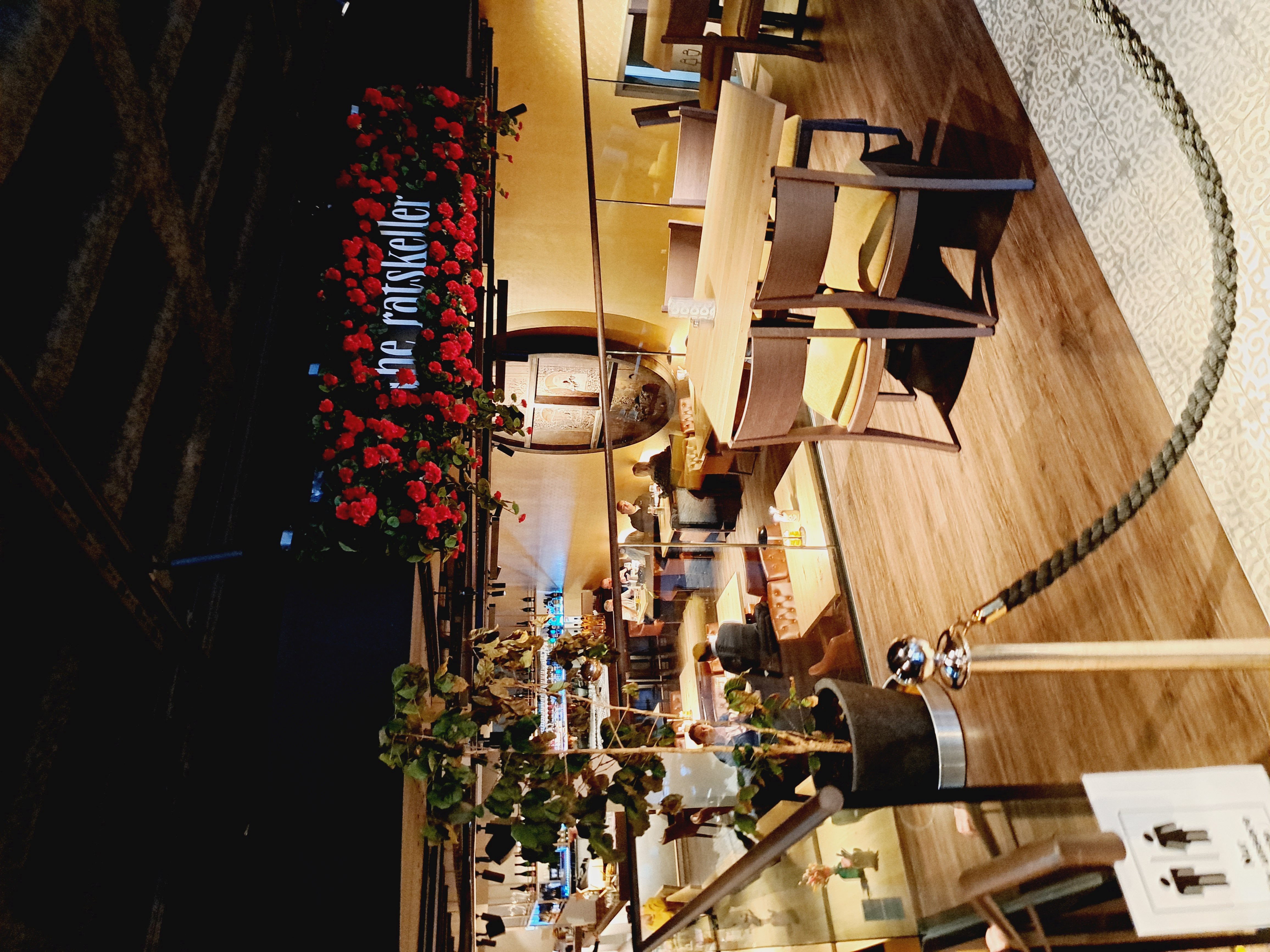
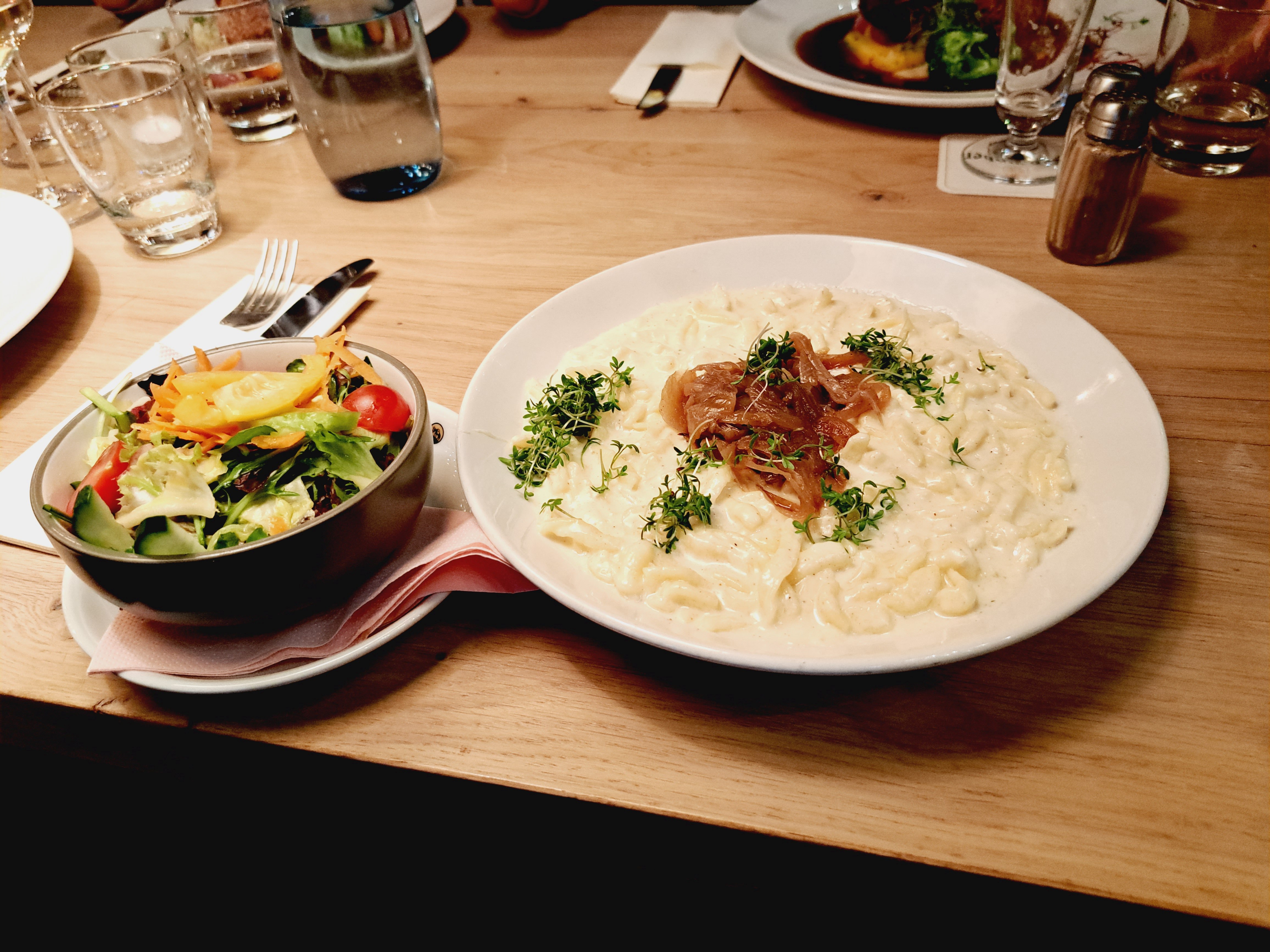
The final day and panel of the workshop featured presentations around: Bridging the Distance: Enabling Long Term Relationships between Communities of Origin and Conservators in European Museums.
The day started with a talk by Leonie Gärtner, conservator from Ethnologisches Museum (SMB SPK) in Berlin, on the The Palau Bai Group in Berlin. The conservator took us through the collaborative reroofing project of a traditional Palauan Meeting House (Bai) as part of the Oceania exhibition of the museum in the Humboldt Forum in Berlin. She was telling us about the process, challenges and learnings of this complex project. Leonie Gärtner finished her talk by exploring how the learnings from this and other projects had led to the creation of a space specifically created for collaborative processes at the Humboldt Forum to enable working together in different areas of the museums.
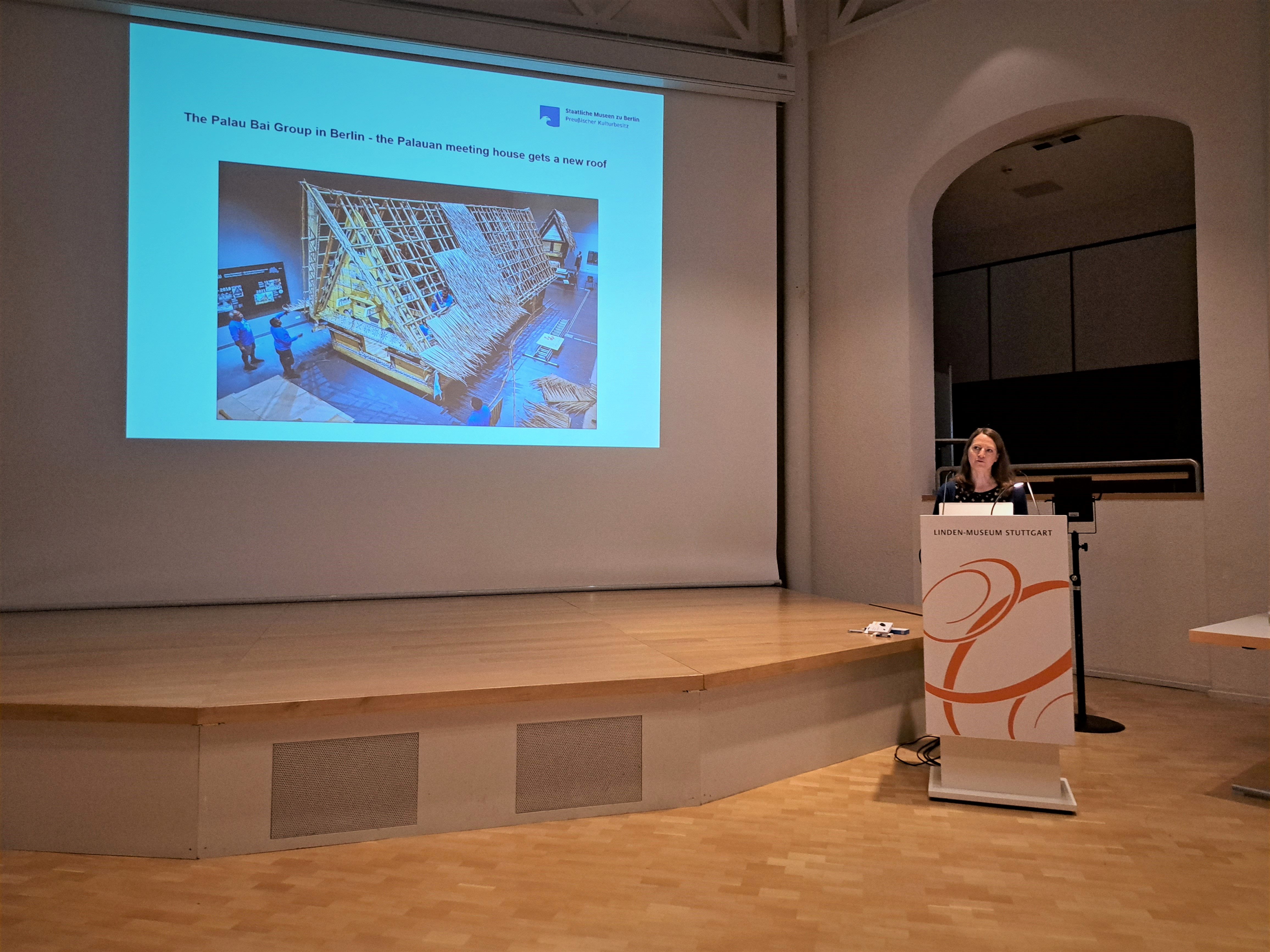
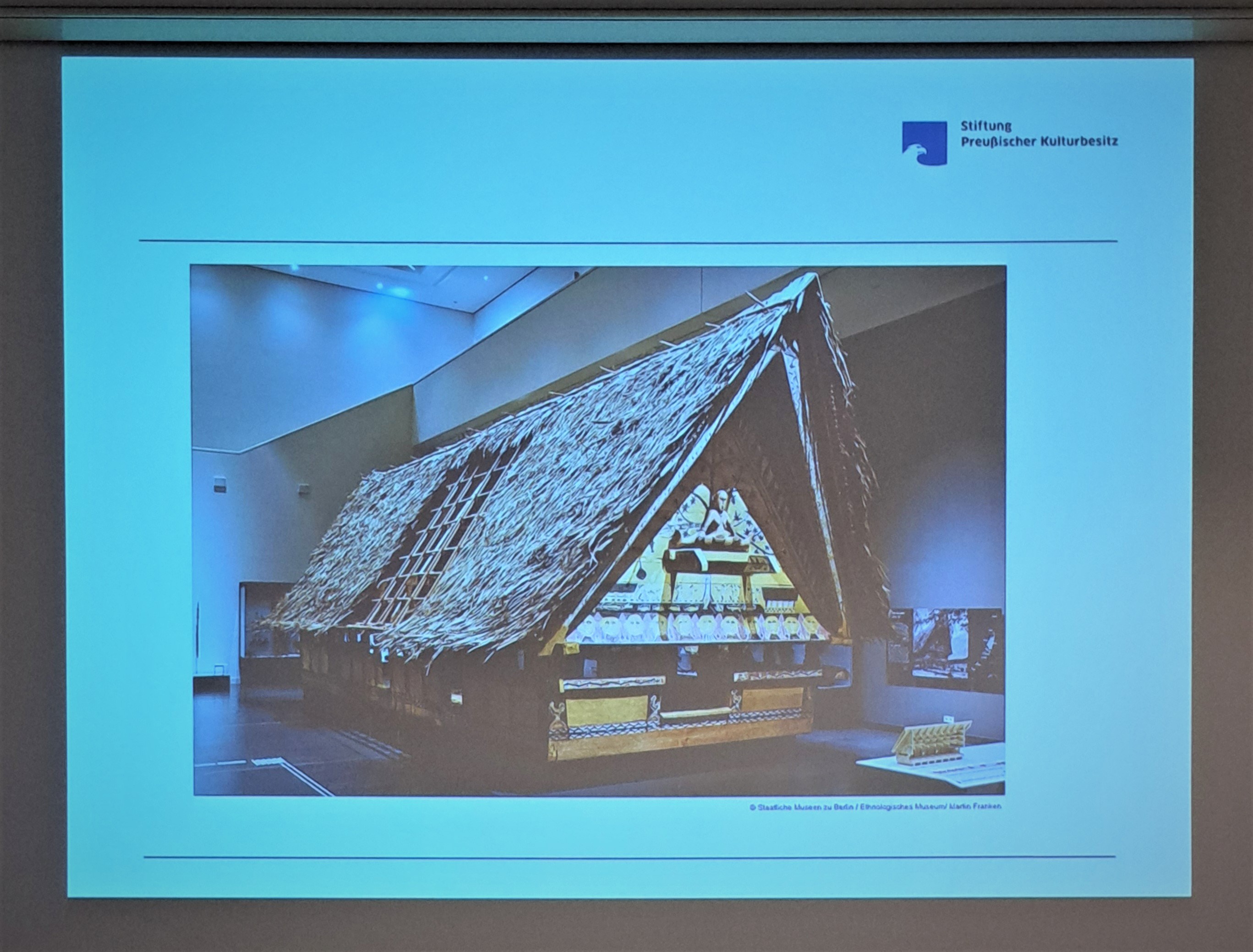
The following presentation Reflections
on collections care practices at the Smithsonian Institutes National Museum of the American Indian was by the conservator Peter McElhinney from the Varldskulturmuseerna in Stockholm/Gothenburg. He talked about what learnings can be taken from his experiences there, such
as shared stewardship, for the conservation practices in Europe. In the consultations with communities, the process of establishing trust
through showing respect and hospitality is central. Peter also spoke about the collaboration with makers and carers and
conservation outreach projects at the museum. This encompasses following and understanding the journeys of where the
objects are coming from and how they are made.
The conservator concluded the talk with thoughts on what needs to be changed
within the European museum context to allow true stewardship.
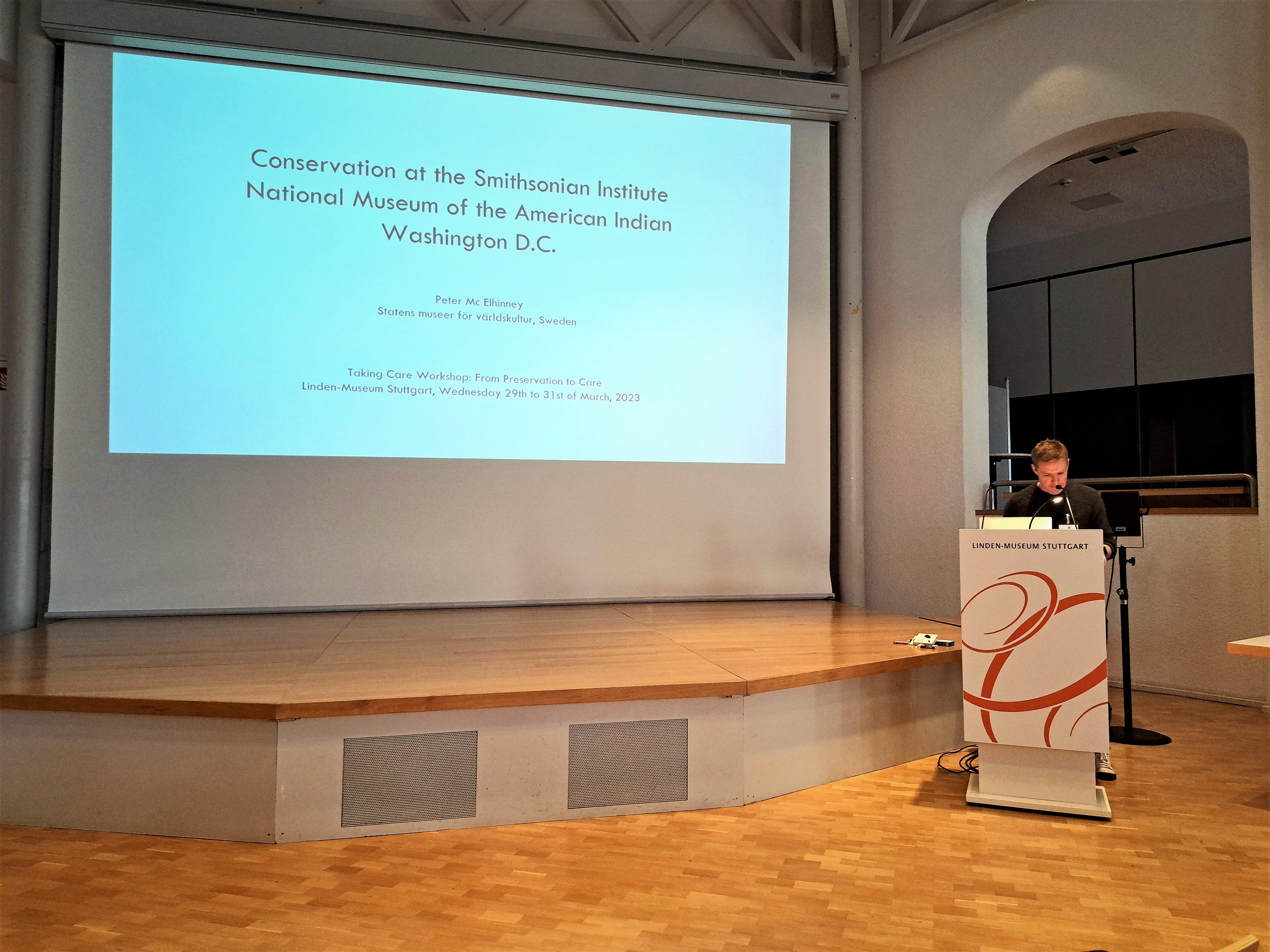
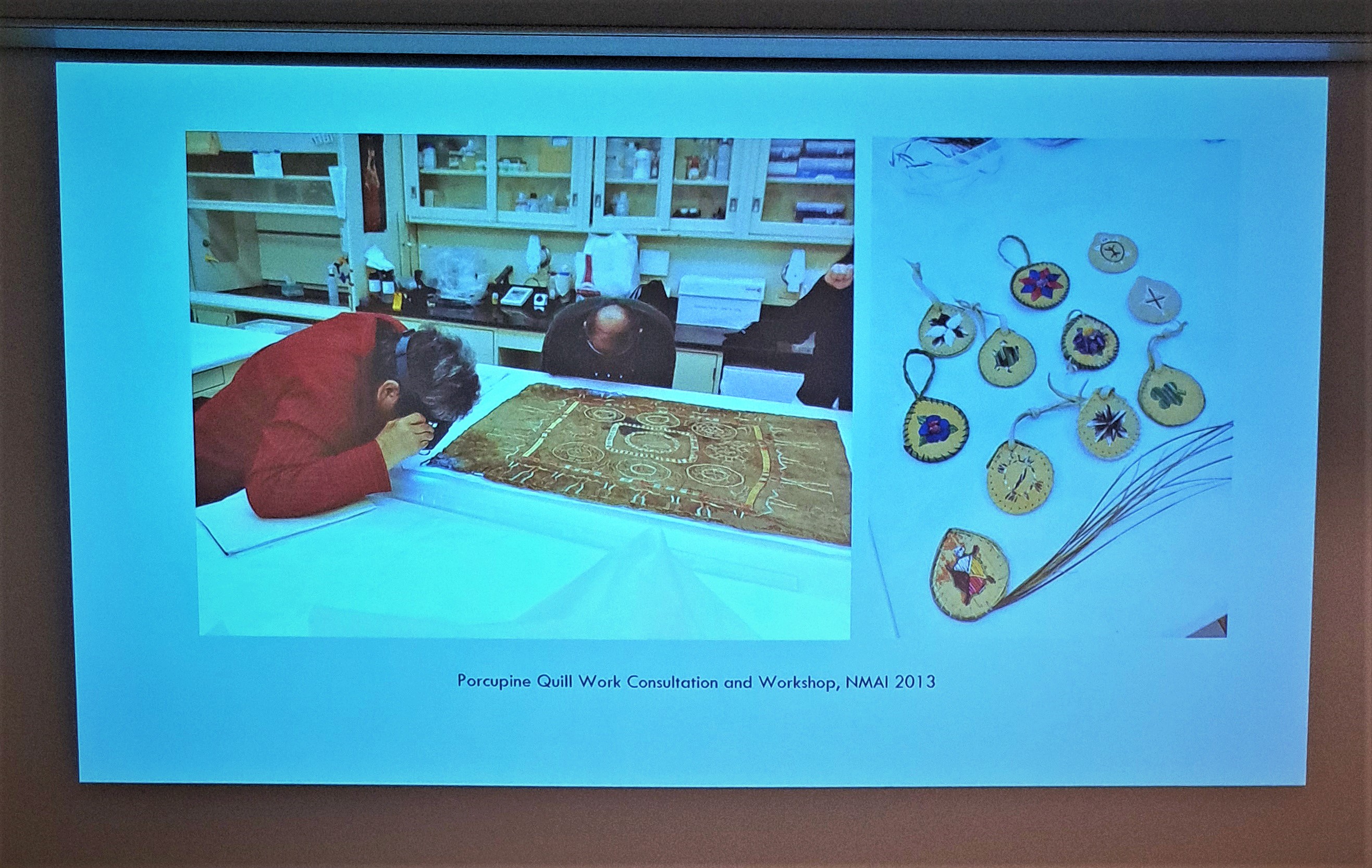
In the third talk of this panel, Informal visits or professional projects, Christiane Jordan, conservator from the Weltmuseum Wien shared insights into case studies of collaborative projects from her everyday experiences. She spoke of the questions about responsibilities, institutional guidelines and challenges that arose from them. In addition, Christiane Jordan left us with the question of how those exchanges can become mutually beneficial for all parties involved.
This led to a discussion exploring the various roles of actors involved, as well as their possibly differing goals in collaborative processes.
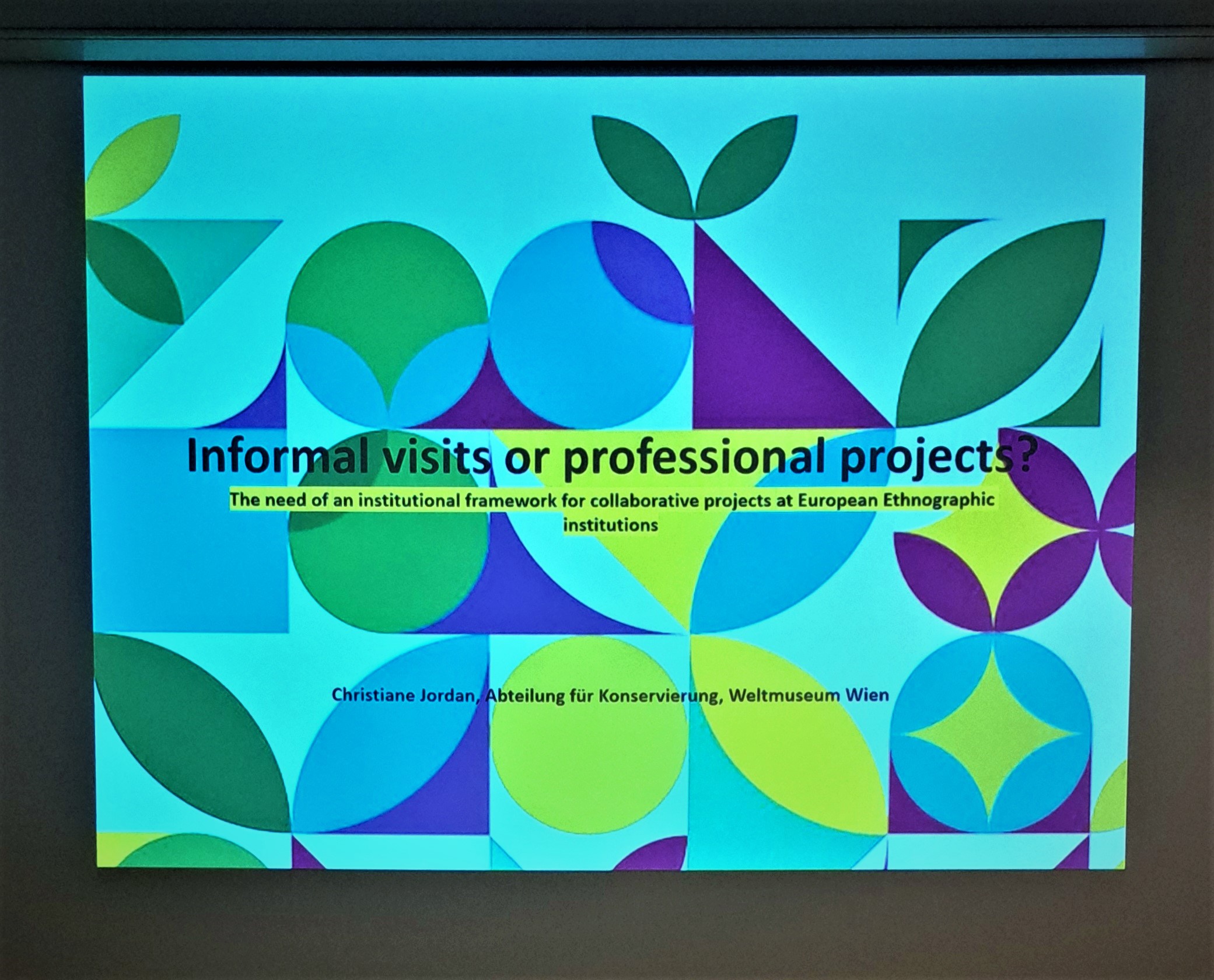
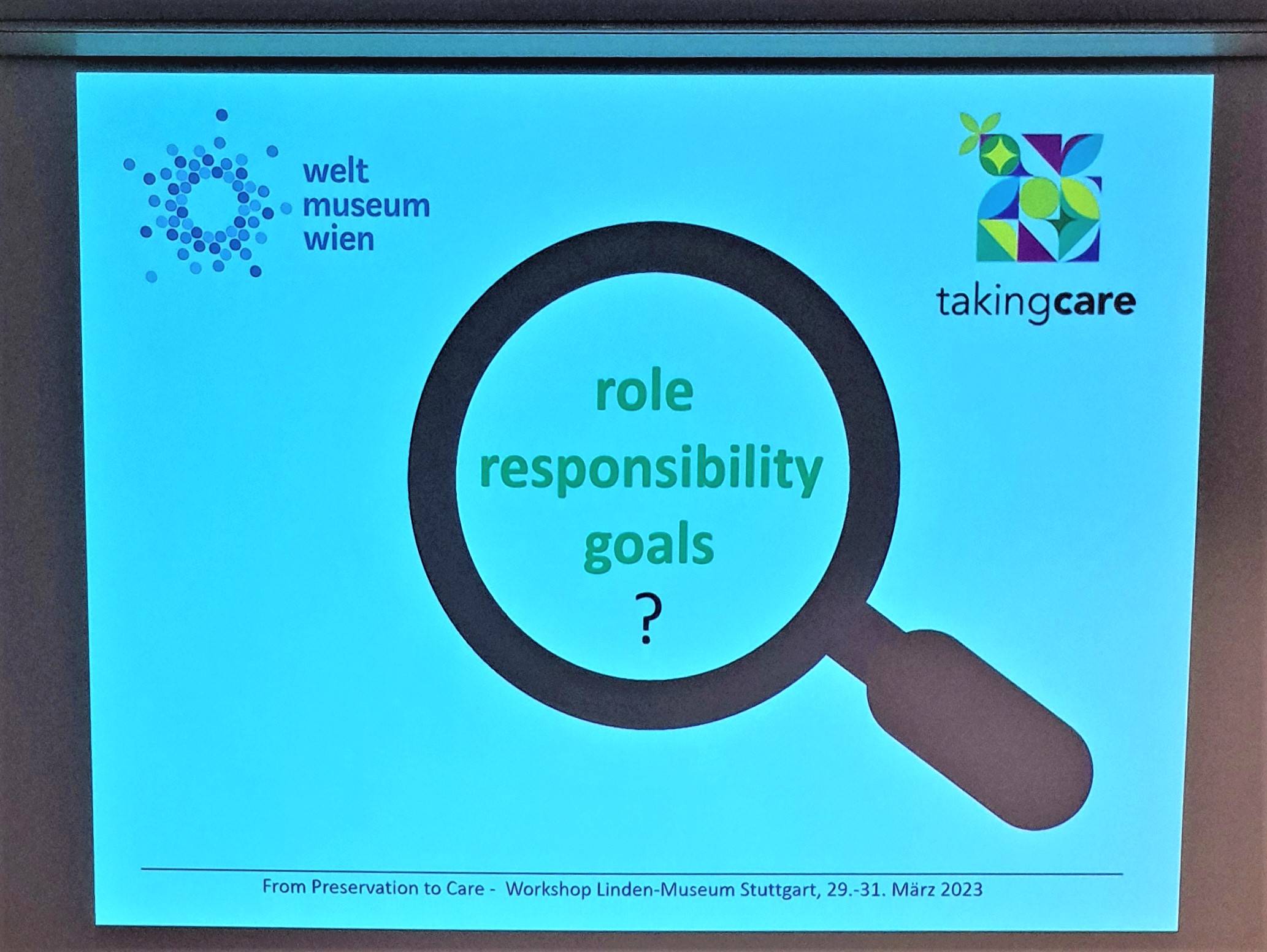
In the penultimate
presentation, Sofie Dierickx, conservator, research assistant and PhD student from the Royal
Museum for Central Africa, Tervuren, spoke of Exchanging
expertise and experience across continents: towards a sustainable
co-stewardship.
In it, she shared personal insights into the challenges, unknown information and other
experiences around collaborative processes such as how to learn to hear the
unsaid.
The conservator also spoke of the guided approaches towards future
projects, such as upcoming knowledge exchange programmes.
In the discussion following the talk, the group shared day-to-day
practicalities of these kinds of projects and talked about how involved
partners could profit from the exchanges.
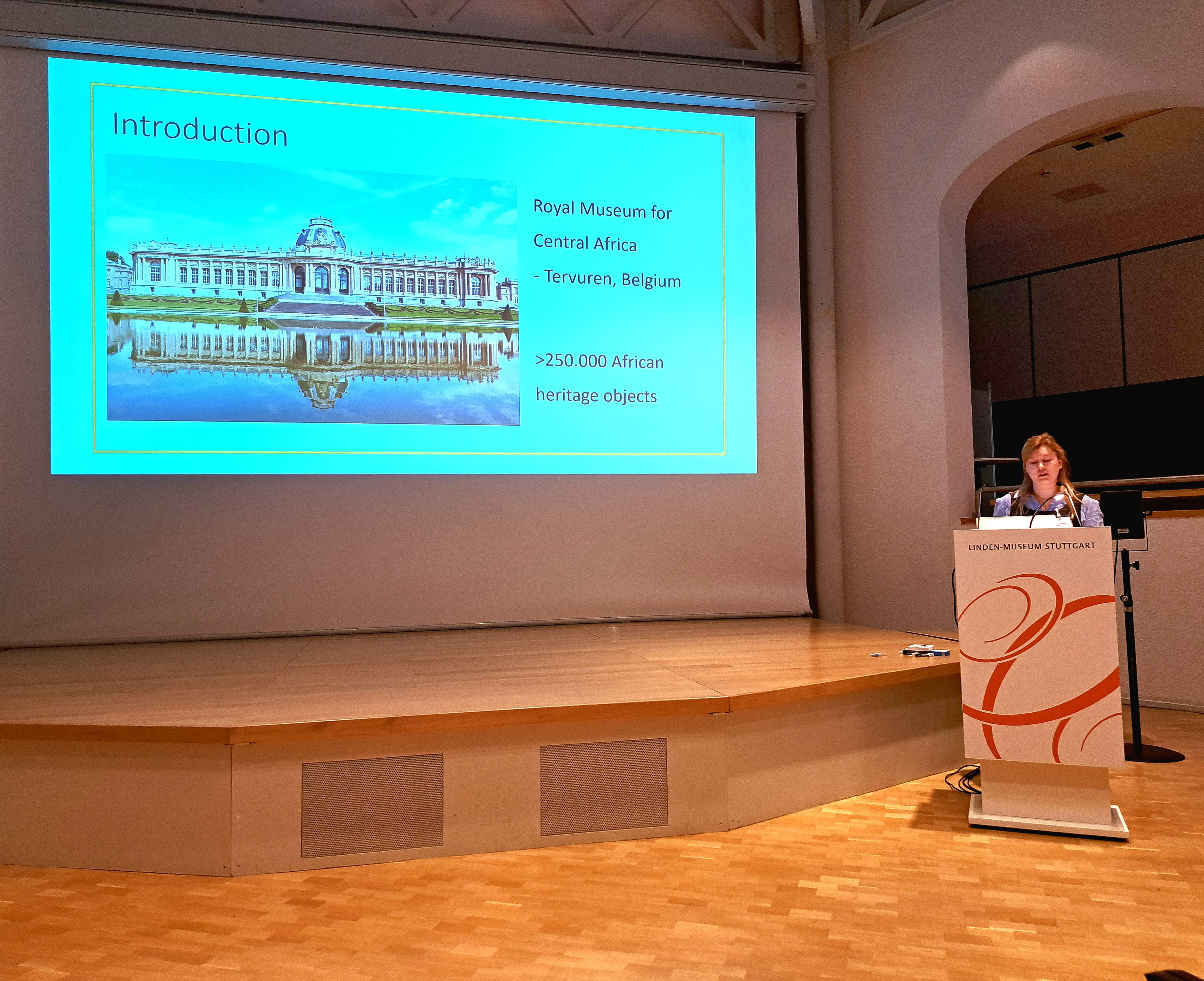
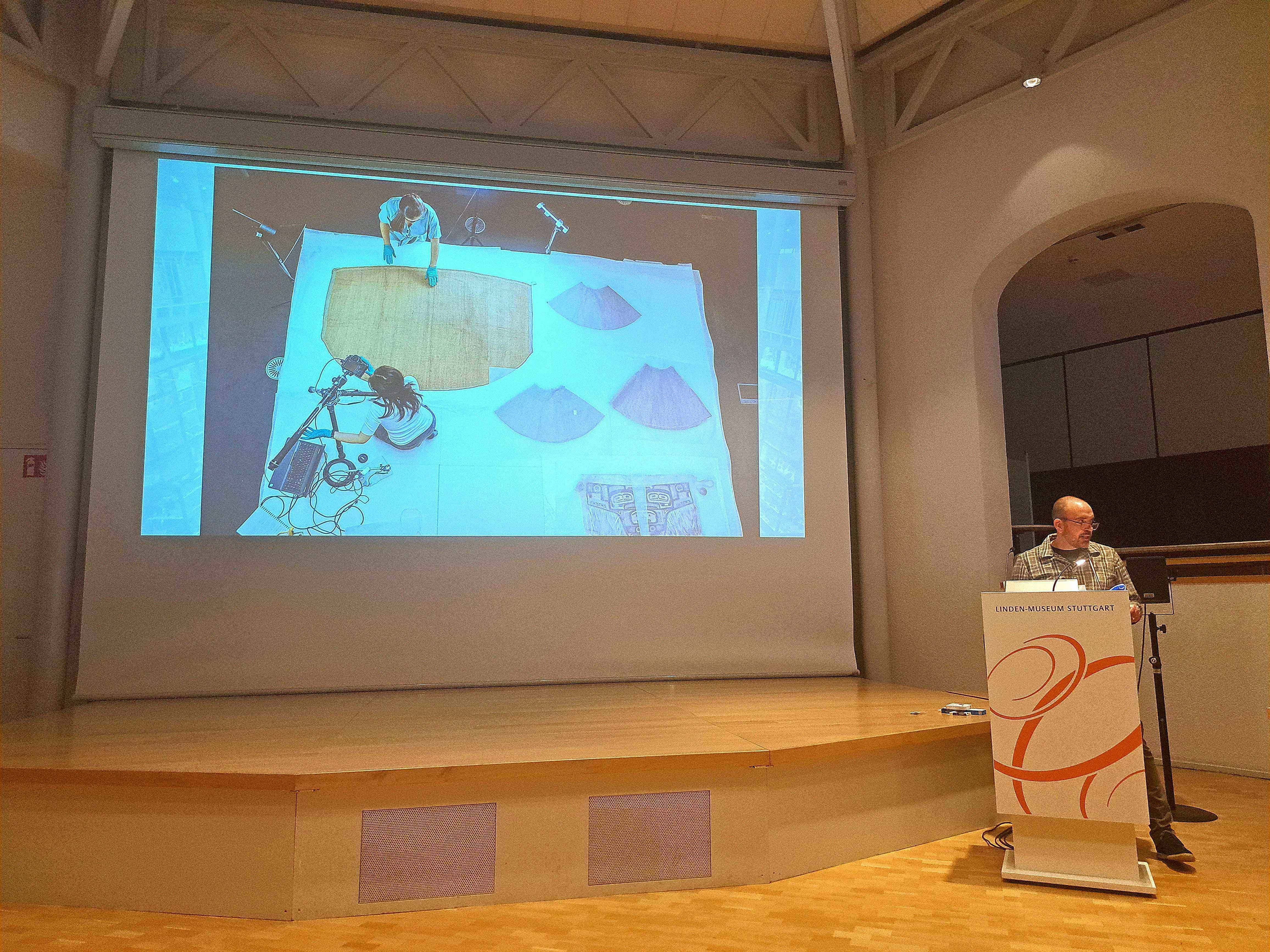
In the final presentation, Jeremy Uden, head of conservation at the Pitt Rivers Museum in Oxford, spoke about the Talking Threads project, a digital collaborative exchange project with communities from Nagaland, Palestine and Canada. It was central to the project that it was being led by the needs of the communities in the different areas, which also pertained to what was being asked when and how, what information was kept, saved and shared.
In the conversation thereafter, participants shared their own experiences and challenges of virtual research projects, as well as the learnings about methods of working with communications in those ways.
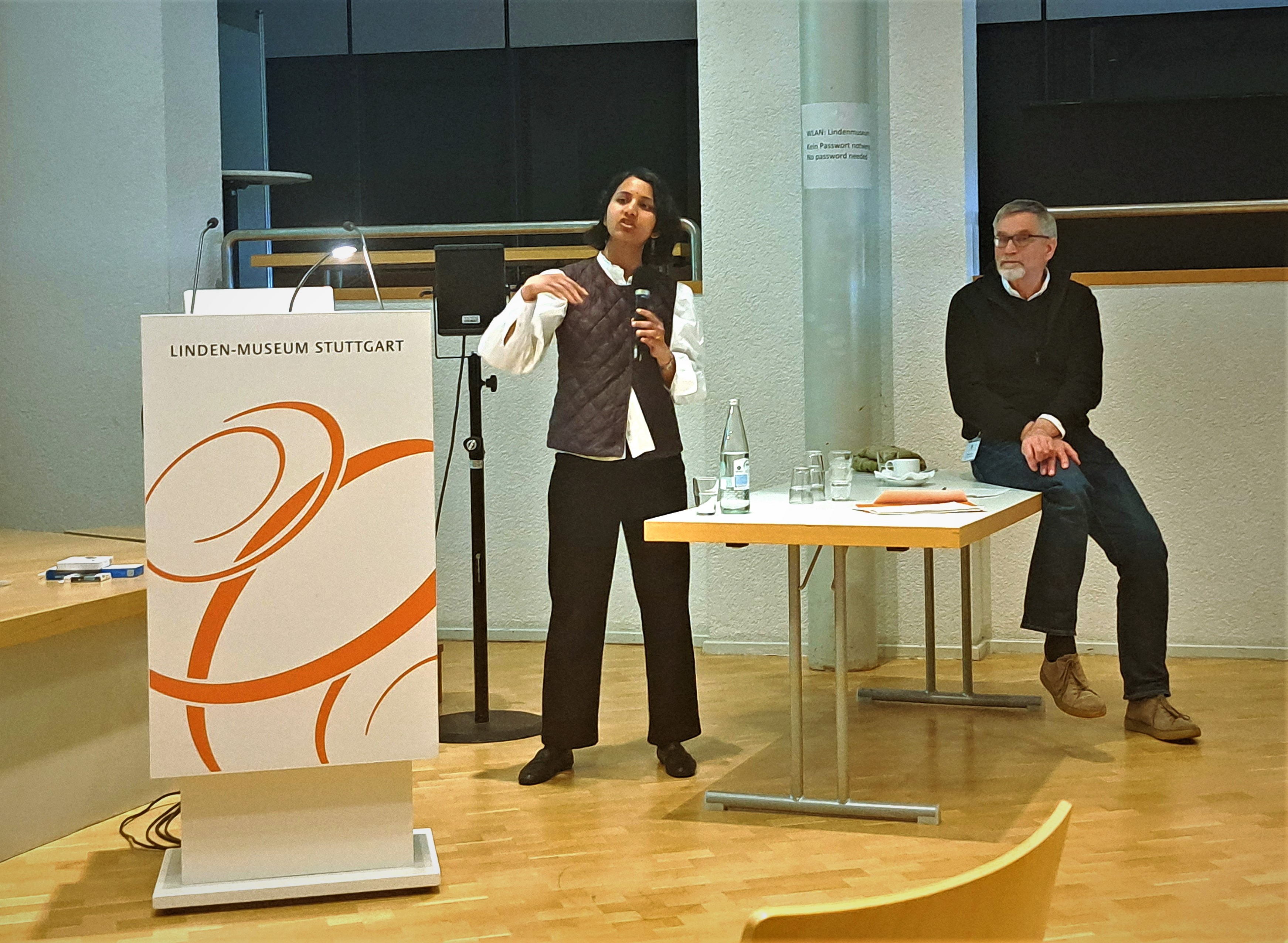
During the final wrap up of the workshop, the group exchanged among the project partners thoughts about the institutional challenges in relation to collaborative projects and talked about ways forward, such as improving internal informal communication.
We thank our partners at the Linden-Museum in Stuttgart for these thought-provoking presentations and for creating a comfortable and safe space to be able to discuss freely the challenges, learnings, questions and to share ideas on how to move forward in our collaborative projects!